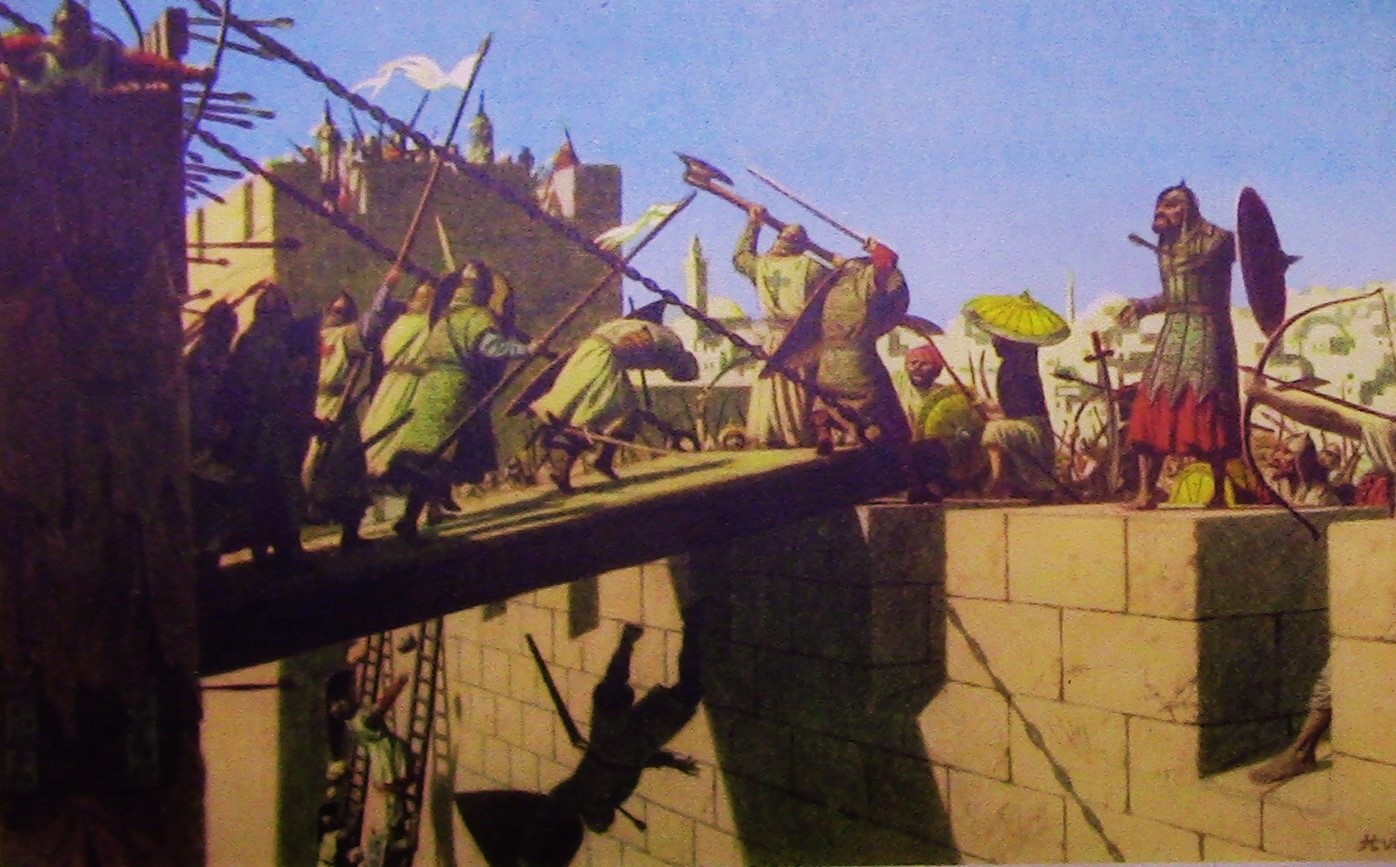UPDATE – Continuation and end – To break the current trend of disinformation by the corporate international press, we must go back in time. In 1971, long before social media took over most of the reporting, the press was still more or less a ‘fourth power’. Now advertising budgets and political censorship determine the content of your newspaper.
Scientific studies were not yet – as they are now – influenced by the urge to publish and by industrial interests, or worse, by computer programs. It was during that period that a “History of the Palestinian Situation” was published at the University of Liège (B) by the non-profit organization ‘Le Masque à Gaz’. Without the cooperation of the Association of Arab Students of the University of Liège, this history would not have been realized.
— Warning —
- Objectivity
Those who contributed to the work of this “history” are aware of not being objective. Moreover, they don’t want to be. For them, practical objectivity does not exist. They know that, in the sense in which the word is generally understood, it is only a big mask, hiding hypocrisy and intellectual dishonesty (in the best-case scenario).
We want to be honest. We may think that this is a great temerity: it is true that honesty is a much narrower door than “honest people” think, but it’s also true that the world onto which this door opens is richer than that of “objectivity”.
What our group attempted to produce, we wanted both:
– A modest instrument for approaching a vast and important reality, linked to all the problems of today;
– A weapon intended for those who share our opinion and can contribute to its expansion and improvement.
We recognize that this is a very ambitious program for the limited resources we have. But how many great resources are used for less good purposes?
2. Some other well-maintained myths about the “Israeli-Arab” problem
Indeed, this problem is difficult to approach, because of certain myths intertwined with European culture and maintained on purpose, sometimes in an ignoble manner (you should see in this regard “the little book” for children entitled “Little David”, which notably shows a hideous Arab … “bad but not very courageous”, with a knife between his teeth, and attacking a school).
Assimilation of anti-Zionism with anti-Semitism or “he who is against Israel is against the Jews”.
It happens that certain people, in order to “open the eyes” of good people to anti-Zionism, qualify Jewish anti-Zionist intellectuals (historians, journalists, etc.) … as mentally ill. We heard a university professor use this term in Liège, during a conference). It seems necessary to establish a short glossary:
1. Jews: formerly derogatory term designating followers of an ancient religion.
2. Israelites: sons of Israel, a well-meaning euphemism for “Jew”.
3. Semites: ancient ethnic group, defined by a linguistic basis and conceived by “race” by racists, and in particular by the nazis.
4. Israelis: current inhabitants of the state of Israel.
5. Zionists:
a. “Idealist” Jews of the early 20th century, grouped into a movement; historical circumstances in general and colonialist capitalism in particular allowed this movement to create the state of Israel.
b. Currently, people who defend the state of Israel and ignore the problem of the Palestinian people; may be very well informed and then be dishonest, or poorly informed and then be ignorant. The usual attitude of well-informed Zionists is to cover up a genocide and glorify with myths like a Colossus with feet of clay.
The “anti-Zionism” = “anti-Semitism” reasoning is simple:
All Jews are Semites (we forget the Arabs, who are also) and therefore potentially Israeli (see already where this is leading us!).
The Europeans, and particularly the nazis, atrociously persecuted the Jews (we note that anti-Semitism is a tradition, both cause and consequence of the non-adaptation of the Jews.)
So, the Europeans must unconditionally support the descendants of the Jews recently persecuted and this because these persecuted Jews have earned the right to become true Semites again by becoming Israeli.
This reasoning, in our opinion, is not enough to justify the definitive expulsion of the Palestinians.
The “Israeli miracle” or ancient Palestine, desert populated by nomads.
Israel has experienced significant economic development, exploited as a “miracle” by European progressives. This evolution is logical and understandable, by:
– The particular form of colonization (see chapter ‘specificity of Jewish colonization’)
– The rapid influx of “executives” and technicians of European origin
– The influx of capital from the international Zionist movement and economic support from capitalist countries. (Note that this economic support goes hand in hand with constant political support)
We cannot justify by progress, even if it is real, the dispossession of an entire people. This myth of the “miracle” presents particularities of vocabulary: the word “desert” (transformed into a garden) and the word “nomad”; these two words are still full of an erroneous meaning: the only desert that has ever existed in Palestine is the Negev. And the Negev is still a desert.
The word “nomad” is tainted with a sociological prejudice.
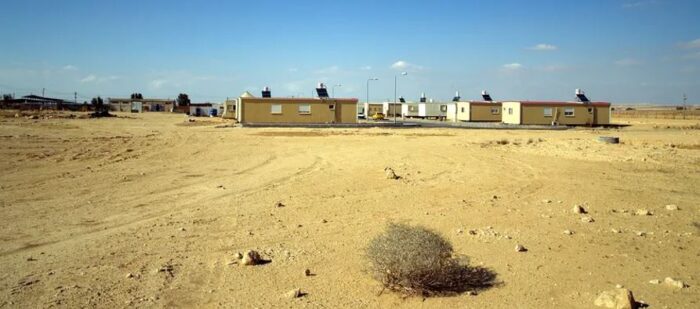
The “good rights” of the Jews or the promised land
We have incorporated into the history a quote on the “refusal of integration” (see chapter 2, ‘Zionism’).
The fact is that the Zionists of the heroic times were poorly integrated. It is therefore normal and human that they dreamed of the land promised by the bible.
But it is better to avoid the realization of certain dreams!
The “promised land” is only valid in the bible and in religion, and has nothing to do with any reality. It is considered the land of the (distant) ancestors of current Jews. But it is possible that these ancestors are illusory (see chapter 1 “Overview of Palestine”).
It is also quite possible that the expelled Palestinians were closer to the ancient sons of Israel than the immigrant Jews, at least from a sociological point of view.
The myth of the “Israeli miracle” is therefore the expression of a belated nationalism, and this at a time when internationalism is emerging. In this regard, it is useful to read the quote from Lenin inserted in chapter 2, “Zionism”. No nationalism justifies a covert genocide.
Contents
Chapter 1: Overview of Palestine
– Its history before the 20th century
– State of the country at the beginning of the 20th century
Chapter 2: Zionism
Chapter 3: Beginnings of the Zionist settlement in Palestine
– The interests of Great Britain
– The Balfour Declaration
– Originality of Jewish colonization
Chapter 4: The British mandate in Palestine (1920-1948)
– English politics during the mandate
– The Palestinian revolution of 1936-1939
– The white paper
Appendix: “The waltz of commissions”
– The Second World War
– The partition of Palestine
Chapter 5: The war of 1948
Chapter 6: Post-war and the Suez Crisis
Chapter 7: From the Suez War to the Six-Day War
Appendix: “Israel and Imperialism”
Chapter 8: Quick Timeline
Chapter 9: Bibliography
****************************************
Chapter 1: Overview of Palestine
****************************************
Its history before the 20th century
Palestine, like Mesopotamia, is a fertile region close to the sea. Since prehistoric times, it has been one of these privileged places, ‘centers’ of civilization. (It is in Palestine, in Jericho, that we find the first known evidence of agriculture and livestock breeding, around 6,500 BC). [Note: Based on the Tanakh – Jewish scriptures – creation is considered to have taken place 3761 years before Christ]
Its history, like that of Mesopotamia, is an uninterrupted series of invasions. Indeed, the south of the Arabian Gulf, an arid region with rare rivers, can be considered from the earliest times as a “reservoir of populations”. The nomadic populations who live there are attracted by the richer regions, Palestine (eastern Mediterranean) and Mesopotamia (Persian Gulf): one after the other, they infiltrate there, invade them, take power there, settle there and assimilate there until the new invasion.
So did the Canaanites and the Hebrews. In addition, powerful peoples (Egyptians, Assyrians, Romans) coveted these regions.
From 2500 to 1000 BC.: Canaanites, Philistines and Hebrew tribes
2500: the region is known as the ‘Land of the Canaanites’ (this people, originally from Arabia, settled there).
1850: Hebrew tribes, originating from the Arabian plateau, attempt to establish themselves in Palestine, but are driven out by the Canaanites. They are going to Egypt.
1300: A tribe of “Sea Peoples” named Philistines (hence the Arabic name Phalestine) settle there.
1290: The Hebrew tribes return from Egypt and enter the region. They will stopover for 40 years in the desert of Sinai, for fear of the Canaanite power.
1050: The Hebrews advance into the country and occupy the city of Jericho.
From 1000 to 586 BC: Hebrew hegemony over Palestine
From 1000 to 586 BC: The kingdoms of Judah and Israel
From 1000 to 926: David and Solomon
1000 BC: David, who defeated the Canaanites, is crowned king. He occupied Jerusalem and made it the capital of the Hebrew kingdom. It was a period of prosperity, especially under the reign of Solomon.
926: After the death of Solomon, the kingdom is divided into two: the kingdom of Judea in the south (Jerusalem) and the kingdom of Israel in the north (Samaria).
From 926 to 586: the kingdoms of Judah and Israel. Period of unrest: struggles between the two states, each itself experiencing internal difficulties. In addition, the two states are threatened by both Egypt and Assyria which compete.
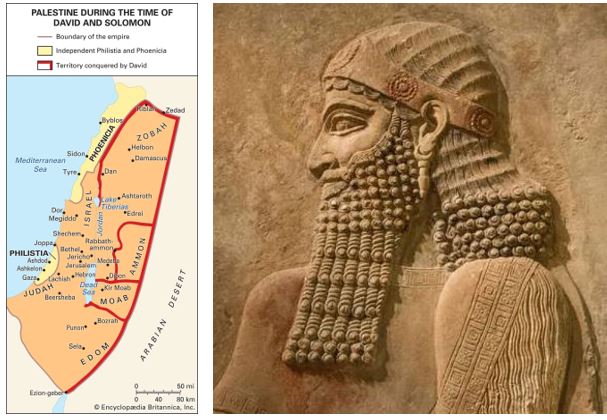
722: destruction of the kingdom of Israel (capture of Samaria) by the Assyrian Sargon II; deportation of elites (intellectual and manual) and mixing of remaining Israelis with newcomers.
586: destruction of the kingdom of Judah (capture of Jerusalem) by Nebuchadnezzar II: new deportation of Jews from the two ancient kingdoms to Babylon. Jews, more or less numerous depending on the time, after the destruction of the kingdoms, continued to live in Palestine without being organized in the form of a state. Their successive attempts at political autonomy will fail. Thus, the political domination of the Hebrews over Palestine lasted a total of four centuries: from 1000 to 586 BC.
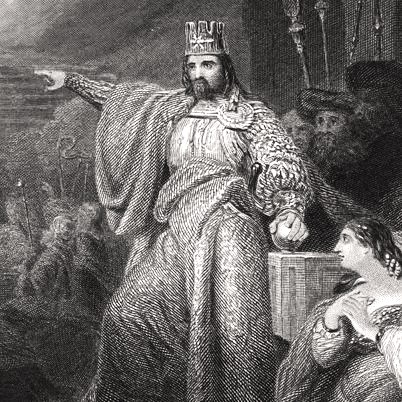
From 586 to 539 BC.: Assyrian domination.
From 539 to 332 BC.: Persian domination.
539: Fall of Babylon. The Persians occupy Palestine. Under Persian domination, the tribe of Judea returned from Babylon to Jerusalem. Jewish religious practices are restored and evolving. There are many religious disputes.
From 332 to 63 BC.: domination of the Seleucids.
332: Conquest of Alexander the Great. Religious quarrels between Jews continue. It follows that attempts to return to political autonomy fail.
From 63 BC B.C. to 636 AD: Roman and Byzantine domination.
70: Titus completely destroys Jerusalem.
135: A Jewish cleric, Barkoka, rebels against the Romans. Emperor Hadrian once again destroyed Jerusalem and carried out massacres. Since this event, Jews no longer made an attempt to appear in Palestine in national or political form until the 20th century.
N.B. Following Hadrian’s massacres, Jewish emigration, which had already been significant for a long time, increased.
It heads towards Arabia (North and especially South) and the Mediterranean basin (Southern Europe and North Africa) to extend to many countries (diaspora).
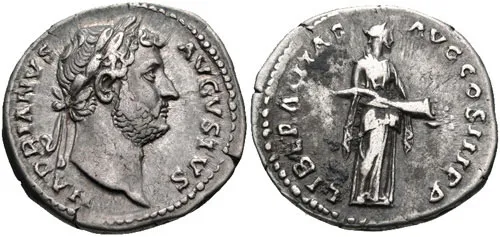
A stream of emigration reaches the Don Valley in Russia. These emigrants succeeded in converting part of the population to Judaism.
In 740, King Bolan embraced the Jewish religion, followed by the kingdom’s nobility and people. (When Constantine I became Christian, Christianity became the state religion: it’s the same phenomenon).
During the dislocation of the kingdom of Bolan, converted Jews (namely emigrant Jews and natives converted to Judaism) dispersed throughout the countries of Eastern and then Western Europe.
Thus, even if we admit the very questionable notion of ‘race’, the European Israelites and the Israelis are not the direct descendants of the Semitic tribe which ruled Palestine for 4 centuries.
From 636 to 1542: the Arab empire.
636: The Arabs, formed into an empire, chase the Romans from Palestine and occupy the region. Previously, nomadic and isolated Arab tribes lived in Palestine. The Arab conquest of 636 caused the increase and sedentarization of the population. There is an influx of Arab tribes from Iraq, Arabia and Syria.
From 1542 to 1918: Turkish domination over all Arab countries. Turkish domination, lasting 4 centuries, deepens latent Arab decadence and leads to a socio-economic and cultural regression of the Arab world in general and of Palestine in particular.
This phenomenon makes the Arab world particularly vulnerable to French and British colonialism and the Zionist occupation of Palestine.
Situation of Palestine at the beginning of the 20th century.
Palestine is a country of approximately 27,000 km². Its final borders were fixed by a series of agreements and treaties spanning from 1906 to 1922.
Until 1914, Palestine remained a remote region of the Ottoman Empire, attached to the province of Syria, sparsely populated and with an economy based on fairly primitive natural agriculture. Industry is practically non-existent and commerce remains local.
The main characteristic of this agriculture is the existence of large estates administered by absentee owners, and cultivated by agricultural workers. These areas cover more than half of the arable land. There nevertheless remain a certain number of small-holder farmers.
Agricultural workers, attached to the land, were exploited by large landowners and Ottoman civil servants. Small owners are exploited by the village chief (sheikh), the governor, the moneylenders, the merchants.
The fellah, workers or small owners, subject to tax, are perpetually in debt (in 1930 we can observe usury rates of 30 to 200%). The only resource they have is very often the sale of their land. This explains the gradual dispossession of the fellah, who will increase the reserve of the unemployed.
The number of inhabitants: around 300,000 around 1880, around 689,000 around 1914. The Jewish community, which exists here as in other countries (Arab or not), is not homogeneous, it is dependent on charitable works (1868: 15% of the 13,000 Jews exercise a lucrative profession). It reached the number of 85,000 people in 1915 (35,000 Palestinian Jews were then part of Zionist organizations), but returned to 57,000 in 1918.
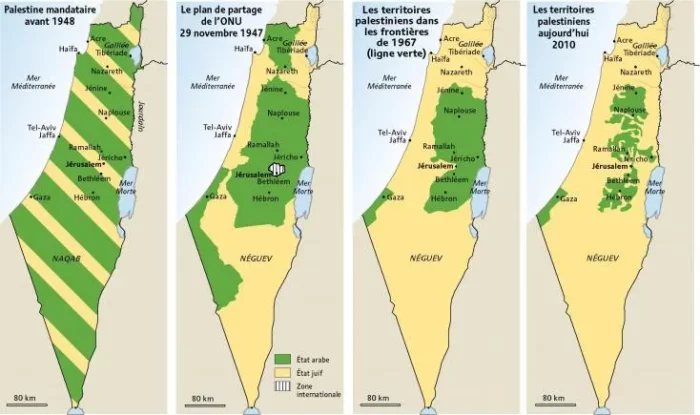
In conclusion, the situation in Palestine is such that at the beginning of the 20th century the country is the perfect prey for all types of colonialism.
**************************
Chapter 2: Zionism
**************************
The Jewish “people” have been “scattered” throughout the world for over 2,000 years; This is what we call the “diaspora”. However, it was only at the end of the 19th century that the idea of a Jewish state spread, an idea supported only by those of the “promised land”. The Zionist movement was born at the end of the 19th century.
Why only at this moment? Is it just a coincidence or should we look for deeper causes?
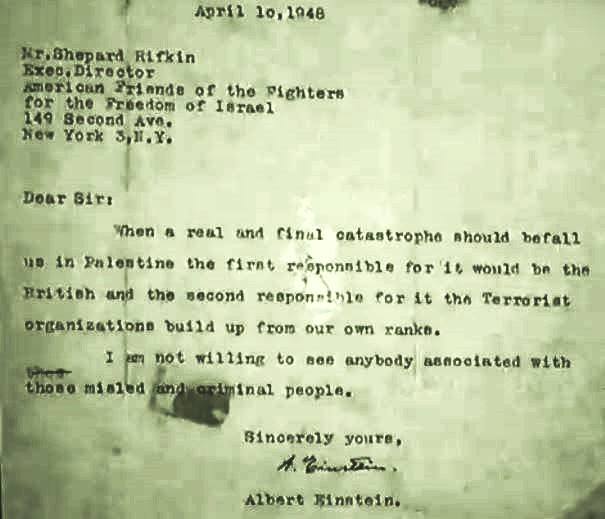
After feudalism: appearance of the bourgeoisie and the national state.
1789 is a pivotal date in history. It marks the end of the feudal period and the triumph of the social system that had been in the making for some time: capitalism.
Feudalism was characterized by a multitude of small economic communities, more or less independent, most often competing; the towns were very undeveloped and populated mainly by craftsmen working individually and traders.
Capitalism will profoundly change this state of affairs.
Thanks to technological progress (appearance of machines) and colonial conquests (appropriation of raw materials), industry develops rapidly, cities are populated by a proletariat, craftsmanship declines in favour of factories.
Power no longer belongs to the aristocrats of yesteryear, but to those who have the money and make it grow by exploiting the labour of the people. This new class is the bourgeoisie.
Another important character of this historical period is the gradual unification of feudal mini-states into national states. Indeed, nascent capitalism, faced with the need to sell the products it produces, needs a sufficiently large market. This is why the constitution of national states is much faster in regions where the bourgeoisie is strongest (France, England, United States, etc.).
N.B. It was only much later that we would witness the collapse of the national borders of capitalism, under the pressure of the large international monopolies, eager to expand their market to the dimensions of the planet.
In summary, in the 19th century, we therefore witnessed the formation, within the framework of national states, of a market benefiting the new bourgeois middle class. This is bourgeois nationalism.
Zionism – a bourgeoisie without a market.
In regions of Europe where the middle class was either relatively weak or embryonic, the formation of the modern national state lingered until the mid-20th century. So, in Italy, Germany and the Balkans. In these regions, bourgeois nationalist movements had to fight against feudal dispersion and political fragmentation and against the hegemony of the national bourgeoisies who had preceded them in the formation of their state.
Zionism is the result of these great historical changes which affected Europe.
It is a reaction to the traditional Jewish bourgeoisie against the European bourgeoisie (mainly from Eastern Europe) who are fighting over economic direction; the Jewish bourgeoisie is slowly being driven out of the economic sectors they occupy. In this sense, Zionism can be explained as the movement of the Jewish national bourgeoisie in search of its own market.
The struggle often took on the aspect of the most violent anti-Semitism among non-Jewish Europeans.
In 1829, the Tsarist government signed a trade agreement with France. In the Roman provinces of the empire (Moldova and Valachia), the active local bourgeoisie is always Jewish. The trade agreement, and the wealth it brings, promotes the development of a national Roman bourgeoisie. Thirty years later, the country is shaken by a first wave of anti-Semitism.
(Jallach El Azam, « Pour mieux comprendre le sionisme », revue Mawakef, Beirouth).
The “Jewish question” is therefore also an economic question, it is the competition between two bourgeoisies for the conquest of the markets.
Concerned about this situation, a certain number of Jewish intellectuals launched the idea of bringing together Jews from all over the world in a certain region (in Uganda, Argentina or Palestine).
The Jewish bourgeoisie would then have an exclusive market in proportion to its size. The famous Zionist slogan that we must “find a land without people to give it to a people without a land” should therefore rather be understood as the need to create a market tailor-made for a bourgeoisie without a market.
These desires for the creation of a national state came to fruition towards the end of the 19th century. They therefore coincide with the height of European colonialism, in search of raw materials, cheap labor and new markets.
Zionist colonialism is therefore timely, it is consistent with Europe’s external interests.
Above all, being Jewish
Zionism also had to fight against attempts and temptations to integrate Jews into Europe, hence the desired ambiguity and confusion between Jews and Zionists, between anti-Zionism and anti-Semitism.
“Zionism is not just a general idea, nor a philosophical and religious concept, it is in its essence a struggle against integration.”
(Ben-Gurion, “Annual Gazette of the State of Israel,” 1952)
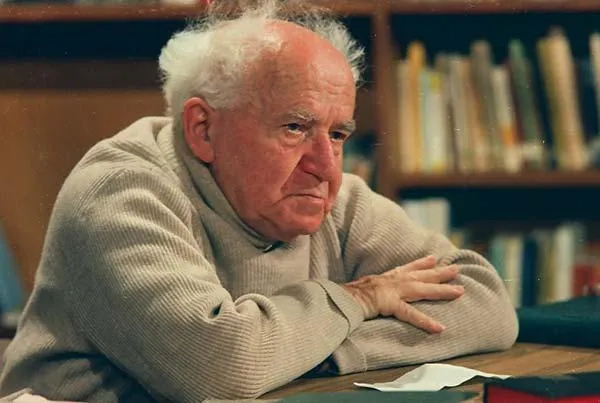
The trend that invites Jews to integrate into the societies in which they live was championed by Karl Marx in his Study of the Jewish Question, published in 1884.
Zionism was sharply condemned by Lenin as a colonialist project and as a sabotage of the solidarity that should prevail between Jewish workers and their European brothers.
(cf. Lenin’s problems with the Bund and the Paolé Sion, socialist parties that only accept Jews as members.)
********************************************************************
Chapter 3: Beginnings of the Zionist settlement in Palestine
********************************************************************
The first Jewish settlers
The development of the Russian national petty bourgeoisie, its takeover of control over the economy and its chauvinistic and systematically racist manifestations (pogroms organized by the state), drove the Jews at the end of the 19th century from the positions in rural life in which they had always were active and pushed them to leave the country.
As early as 1882, several Jewish agricultural colonies were founded in Palestine. The pioneers, mainly from Romania and Russia, ignored the most basic concepts of agriculture and quickly fell into debt.
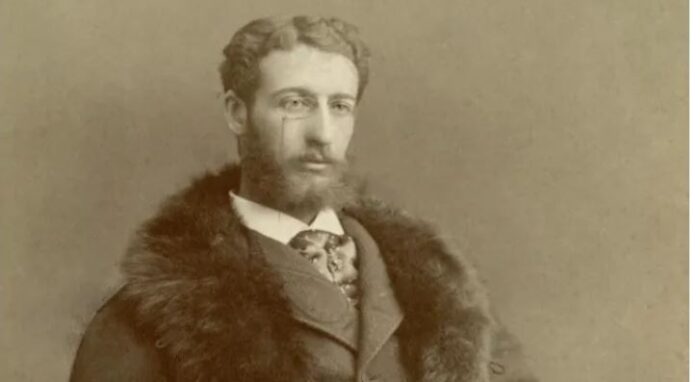
That same year they have to seek help abroad. Baron E. de Rothschild (France) will be their benefactor. Certainly a benefactor, but also an informed capitalist: the colonies have to pay. The baron placed a board there that was responsible for the obedience of the colonists and to suppress resistance.
Little by little, the settlers will realize that fellah (Arab agricultural laborers) are a cheap labor force that works in their place. The settlers become ‘planters’. At that time, Jewish colonization became a colonization of the classical type.
Palestine: future Zionist state
In 1897 the Zionist movement expanded. It held its first conference in Basel, Switzerland. We first examine the Jewish settlement projects in Uganda and Argentina.
N.B. The Jews of Palestine show that they are fierce supporters of Jewish colonization in Uganda, and continue to rail against the cursed land of Zion, “land of graves and corpses.”
(Léemach, quoted by Koestler, “Analysis of a Miracle”, Paris, 1949).
Palestine is ultimately designated as the future Zionist state.
This choice is the combination of two motivations:
– One rational argument: the desire to place oneself under the protection of European imperialism (in this case English), the only one authorized at the time to control the world and its inhabitants. The other, irrational, the desire to return to the “promised land”.
In 1900, Baron de Rothschild transferred his colonies to the ‘Jewish Colonization Association’ (JCA), a private association whose aim was to support Jewish emigration around the world.
In 1901, the Jewish National Fund was founded, financed by individual contributions from thousands of Jewish households. The main purpose of this fund will be the purchase of land that will become “inalienable property of the Jewish people” and thus removed from land speculation.
Hertzel, founder of the Zionist movement, died in 1903. However, the Zionists’ dreams will survive because they are consistent with Britain’s imperialist projects in the Arab world.
Britain comes into play: its interests in the Middle East.
In 1904, Britain, fearing competition from German imperialism in the world, established the ‘Entente Cordiale’ with France (Lyautey-Kromer Pact), which it formed under Prime Minister Sir Henri Campbell-Bannerman in 1907, would expand to Belgium, Spain and the Netherlands.
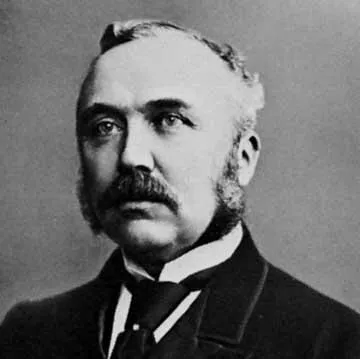
It was at that time that this English Prime Minister announced the establishment of a committee composed of leading university professors. It must analyse the causes of the fall of previous empires in history and make recommendations to prevent or at least postpone the fall of the British Empire.
After citing the reasons that determined the fall of empires and recalling Europe’s interests in the world, this report asks the decisive question:
Where could the danger come from that threatens the British Empire in particular and European imperialism in general?
The answer came quickly:
“The danger lies in the Mediterranean, the hinge between the West and the East, and the route from Great Britain to the colonies of the Far East, a route that passes through the Suez Canal. In fact, from Rabat in Morocco to Mersin in Turkey, there is indeed only one people who enjoy a common history, a common civilization, a common language: the Arab people. There lie all the possibilities of a possible national rebirth and the resources of a probable power.”
The report then asks: “What would be the situation if the aspirations of these people were effectively realized through unity and their efforts were channelled?
The answer is clear:
“The realization of these ambitions would be a decisive blow to the British Empire.”
To protect against a possible disaster, the commission recommends that the Great Powers keep this region in a dismembered state – (the French in North Africa, the English in Egypt and the Middle East, the Turks in the Middle East) – retarded and completely ignorant. She recommends fighting against any attempt at unification, whether intellectual, spiritual, or especially political and territorial.
The most effective way is to separate the African bloc and the Asian bloc by erecting a ‘powerful human barrier’ on the bridge that connects them, linked to Britain and hostile to the inhabitants of the region: this will be the role of Jewish colonization in Palestine.
British imperialist interests are completely consistent with those of Zionism.
N.B. On the interests of Great Britain in the Middle East, one can consult the articles by M. Rodinson and K. Mohieddine in “Les Temps Modernes”, 1967, no. 253 bis, and the brochure “Gauche authentique, Gauche aventurière” of the Lebanese Communist Party, Beirut.
The Balfour Declaration
In 1914, the First World War broke out.
The Zionists continued their pressure on Britain to achieve their common interest: the establishment of a Jewish state in Palestine.
Before the end of the war, English Zionist leader Herbert Samuel presented in a report to the British government the project of establishing a Jewish state in Palestine under English control. He proposed “to group 3 to 4 million European Jews there” and justified himself in these terms: “In this way we will have a new friendly state, bordering Egypt and the Suez Canal.”
Practical negotiations are started between England and the two Zionist leaders Rothschild and Weizman.
In November 1917, these contacts resulted in the statement by Balfour, then British Foreign Secretary:
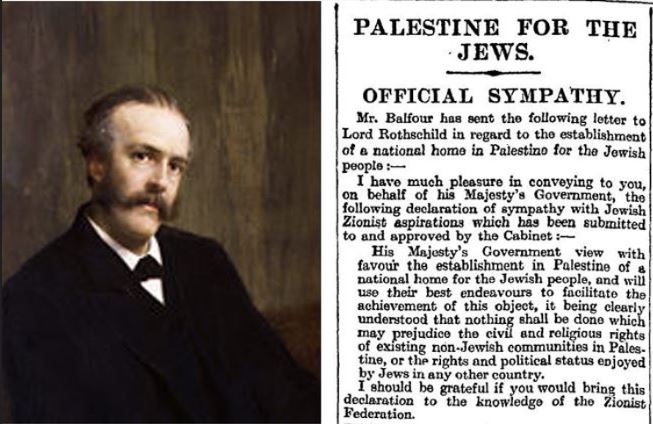
Palestine for the Jews – Official sympathy
Dear Lord Rothschild,
I have much pleasure in conveying to you, on behalf of his Majesty’s Government, the following declaration of sympathy with Jewish Zionist aspirations which has been submitted to and approved by the Cabinet: …
His Majesty’s Government view with favour the establishment in Palestine of a national home for the Jewish people, and will use their best endeavours to facilitate the achievement of this object, it being clearly understood that nothing shall be done which may prejudice the civil and religious rights of existing non-Jewish communities in Palestine, or the rights and political status enjoyed by Jews in any other country.
I should be grateful if you would bring this declaration to the knowledge of the Zionist Federation.
Yours sincerely, A. J. Balfour.
It is important to note that a year and a half before the Balfour Declaration, a treaty of alliance between Britain and Hussein Ben Ali, Sharif of Mecca, was signed, discussing the independence of the Arab countries, including Palestine.
N.B. Hussein Ben Ali is the father of Faisal, the future king of Iraq and of Abdullah, the future king of Jordan, by the grace of Great Britain.
In exchange for these promises of independence, the Arabs had to fight the Turks and the Germans.
“I have been instructed by the British Government to assure you that England has no intention of signing a peace treaty which does not mention, under essential conditions, the independence and unity of the Arab peoples, from Mersin to the north to the Indian Ocean to the south, except Aden and from the Persian Gulf, eastward to the Red Sea, Sinai and the Mediterranean Sea in the west.”
(Letter from Mac Mahon, English High Commissioner in Cairo, to Hussein Ben Ali, December 13, 1915).
This political maneuver of agreement with the Arabs is understandable: England needs them to defeat the Turks in the Middle East.
“The Arab contribution was decisive in determining the Allies’ victory.”
(General Allenby, official report to the British Ministry on June 18, 1918).
However, the Arabs’ desire for independence damaged English colonial policies.
England obtains the mandate over Palestine
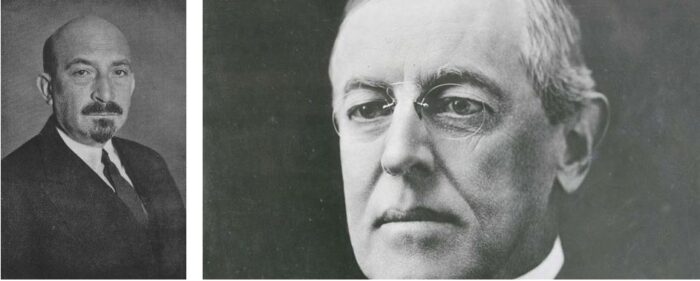
In August 1918, after Palestine had been liberated from the Turks, England, despite its promises to the Arabs, and to their great surprise, united the Palestinian territories under the control of the “Department for Occupied Lands”.
This military government immediately began implementing the Balfour Declaration: it authorized a Jewish mission, led by Weizman, to come from London to take part in building the country.
In January 1919, the Arabs at the Congress of Versailles demanded the implementation of the Hussein-Mac Mahon agreements.
Officially and for the first time, the Zionists announced the Balfour Pledge, recalling the full agreement of the Allies on this issue.
England claims that its promises to the Arabs made no mention of Palestine at all; they add that the importance of their interest in this region makes it impossible for them to keep such promises.
The American delegation proposes sending a commission of inquiry to Palestine with the aim of determining the true wishes of the Palestinian people in choosing their political regime.
This commission, the King-Crane Commission, stated in the full report of its investigations on August 28, 1919, after the declaration of Wilson’s principle of the free consent of nations to self-determination that:
“Given that this principle must be generalized and taking into account the wishes of the Palestinians, we are obliged to admit that the non-Jewish residents, i.e. 95% of the population, refuse the Balfour promise and Jewish immigration (we add: which has already begun – compare ‘originality of the Jewish colonization’) and that they are demanding their independence, that is, the departure of the English.”
“The fact that Jewish immigration is imposed on a people in such a psychological state and with such aspirations for freedom is nothing more than a contradiction of the Wilson Principle, which we have just stated.”
This report had no effect on Britain and no resonance with President Wilson himself.
On April 25, 1920, the Supreme Council of the Allies met in San Remo and decided, in accordance with Article 22 of the Charter of the League of Nations, to place Palestine under British mandate.
The text of the mandate refers to the Balfour Declaration and the Allies’ agreement to the creation of a national homeland for the Jews. The aspirations of the Palestinian Arabs, carelessly referred to as non-Jewish population groups, are being implemented in silence.
Originality of Jewish colonization: ‘Jewish product and Jewish work’
From 1900 to 1914, three forms of Jewish colonization can be distinguished in Palestine:
* The colonies of the I.C.A., as successor to those of Rothschild;
* Colonization planned by Zionist organizations;
* The orange groves of private Jewish capitalists.
In all three cases considerable expenditure is required: thus the installation of a family of settlers costs about a thousand pounds sterling. The Jewish settler from Europe has a high standard of living and cannot compete with the fellah for the production of vegetables and grains.
Jewish farmers very quickly (in search of profit) began to systematically exploit local labour. Jewish colonization at that time was a ‘classic’ colonization: exploitation by foreign settlers of a country’s local labour force.
The new factor will be the contradiction between established settlers and new Jewish immigrants looking for work. Especially in the period 1904-1905, the time of the second wave of Zionist colonization, the failure of the 1905 Russian Revolution drove many Jews into the arms of Zionism. The new immigrants are largely young Westerners, from the lower middle class, with a high standard of living, unskilled in agriculture (according to Van De Velde, 43% of them have completed university, technical studies, etc.).
These new immigrants will impose the motto: ‘Jewish work, Jewish product’.
What do these order words mean?
Jewish bosses, like all bosses, strive for maximum profit. They have an interest and inclination to employ Arab farmers rather than immigrants for three reasons:
* The Jewish farmer is less accustomed to climatic conditions and therefore less resistant;
* The fellah is more adept at cultivating the land than the Jewish petty bourgeois who comes from Europe;
* The Palestinian farmer, with a low standard of living, is satisfied with a lower salary than the Jewish immigrant.
The Jewish immigrant is not competitive in the labour market.
Employers’ preference for Palestinian farmers would therefore seriously slow down Jewish immigration, thereby damaging Zionist projects to transform Palestine into a settlement colony.
Zionist organizations therefore have an interest in systematically excluding Arab labour from the production circuit and pushing for the creation of a closed Jewish market: a market where the producer, the middleman and the main consumers are Jewish.
N.B. The application of the motto ‘Jewish work, Jewish product’ will not go smoothly: for example, established settlers organized a boycott of new immigrant Jewish workers in Petah Tikva in 1905.
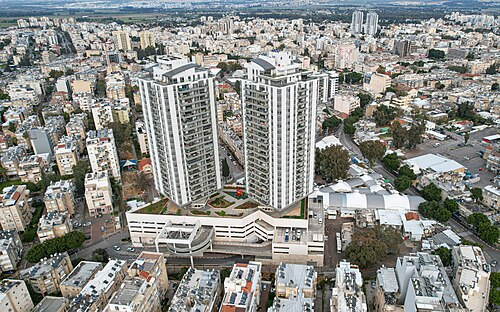
The consequences of these keywords are:
* The exclusion of Arab labor from production will transform an increasing number of Palestinian peasants into sub-proletarians drawn to the cities. In fact, the Arab market does not have the same vitality as the Jewish market, because it is too subject to conservative feudalism. Its financial strength is in no way comparable to that of the Jews who benefit from significant assistance from Zionist organizations around the world. Its technical strength is inferior to that of Jewish immigrant intellectuals.
* The creation of the Jewish market will deprive the Arab masses (both the fellah deprived of their land and the Jewish sub-proletariat) of the ability to act effectively in all facets of the economy in the event of strikes and uprisings.
We will see the consequences of this phenomenon later (compare with the revolution of 36-39).
In short, the application of these operative words puts an end to the ‘classical’ colonization of Palestine.
Jewish colonization becomes settler occupation: the Palestinian people are expelled from their land and forced to fight from outside.
*****************************************************************
Chapter 4 – The British Mandate in Palestine 1920 – 1948
*****************************************************************
In 1918 the population of Palestine numbered 57,000 Jews and 700,000 Arabs.
Britain, given the task of guiding the Palestinian people and helping them govern themselves in accordance with the Charter of the League of Nations, appoints Sir Herbert Samuel, famous Zionist and preacher of the creation of Israel, as its first High Commissioner.
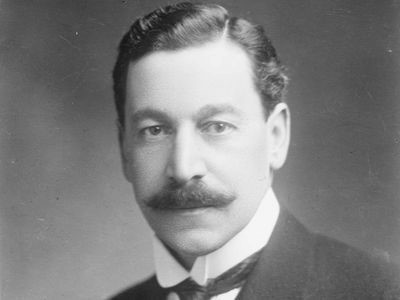
After Samuel made the government 100% Jewish, he opened the doors of Palestine to unrestricted Jewish emigration. He distributed 500 km2 of state land among the Jews; he added, after a royal decree, 22 villages of the Ben Amer plain to the state, which he ceded to the Zionist association. He attributes to the Roterberg company (*) the monopoly on the exploitation of the waters of the Jordan, as well as on the extraction of salts and ores from the Dead Sea, for 75 years.
(*) In the 1930s, a Jewish Russian immigrant to Palestine, Pincus Rotenberg, decided to harness the strength of the river Jordan at its confluence with the Yarmuk River to build a hydro-electric power station that, until it was destroyed in the 1948 Arab-Israeli war, produced 40% of the electricity of mandatory Palestine. (https://www.mei.edu/publications/jordan-river)
English policy during the Mandate Britain, as we have seen, wants to maintain its grip on the Middle East. This region is essential from an economic point of view: controlling it means controlling Arab oil. This region is essential from a strategic point of view: controlling it means controlling the Suez Canal, the route to the Far Eastern colonies (India).
Britain, as we have seen, wants to gain a secure ally in the region of Palestine, a state linked to capitalism and European imperialism; this explains the encouragement given to the Zionist movement. The rise of Palestinian Arab nationalism makes British politics, to put it mildly, complex.
The inextricable tangle of contradictory promises made by the English to the Zionists on the one hand and to the Arab feudal lords on the other, during the war of 14-18, illustrates this policy perfectly. Playing Jews against Arabs and vice versa is the application of the old colonial policy: divide and rule.
England now only has to take on the role of ‘forced-and-good-will mediator’. Ultimately, this yo-yo policy drags the British into a spiral of violence because of the nationalist passions it has helped to foster.
To summarize English policy during the Mandate, we are forced to imagine a simple and cyclical pattern invariably repeated during the Palestinian riots and uprisings of 1920, 1922, 1928, 1929 and 1933:
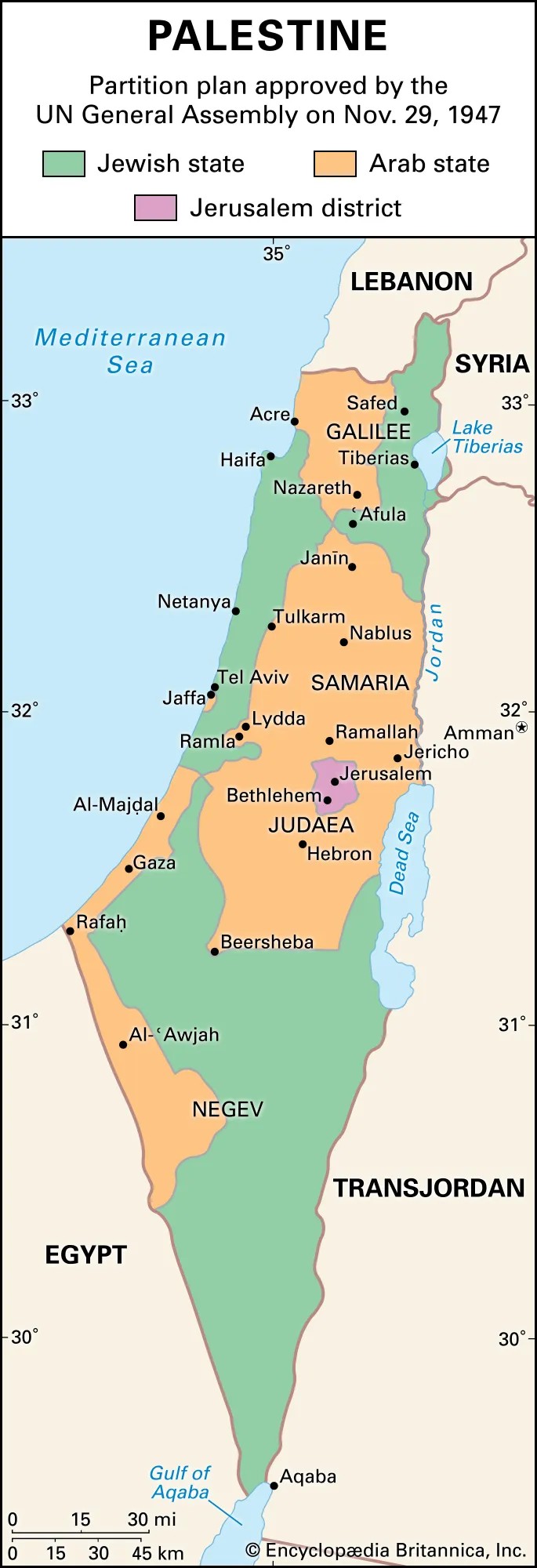
* Encouragement for Zionists;
* Palestinian opposition;
* Creation of committees whose reports, which are increasingly critical of British policy, are buried in advance (see: the waltz of committees); The various reversals in British policy can be explained by:
* The need for the British not to exacerbate Arab nationalism while promoting the establishment of Jewish colonies. (“A little loyal Jewish Ulster in a sea of potentially hostile Arabism” (Storrs, “Orientation”, London, 1946).
* The quarrels between the Colonial Office and the War Office, generally favorable to Zionism, and the Foreign Office, generally favorable to a policy that spares the Arabs.
In any case, Zionism, the British’s natural ally, is in Palestine a wonderful abscess of fixation that will prove all the more valuable because it truly threatens Arab interests.
The Zionist enterprise diverts the anti-imperialist and anti-colonialist current of the Arab masses against Jewish immigrants. The Arab masses do not realize that Zionist colonization, although it has its own vitality (which, moreover, led to it asserting its independence from England in 1948), is in reality at present only a pawn used by imperialism.
The Arab masses do not realize that the main contradiction lies between the colonized people (themselves) and the real colonizer (England). Only in 36-39 did they begin to deal their most violent blows against the British. At that time, however, Zionism was already very strongly entrenched in Palestine.
The Revolution of 1936-1939
The revolution of 1936-1939 and the circumstances of its unfolding provide one of the best historical examples for the study of the Palestinian question. The revolution is the culmination of the Palestinian struggle against the British Mandate and the Zionist colonialist presence; it followed long years of peaceful struggles, petitions, demonstrations, strikes, etc. (For more details, see N. Weinstock, Le Zionisme contre Israel, Paris, 1969).
The main value of the revolution comes from the broad popular base and is confirmed by the active opposition of feudal and religious bourgeois families.
First period of the revolution
This period actually starts on October 14, 1935.
The revolutionary armed struggle operations are led by Izz ad-Din al-Qassam.
NB: Before al-Qassam started the revolution, he had asked the Mufti of Jerusalem, El Hussein, to appoint him as an itinerant preacher of the armed struggle; the Mufti had refused.
It should be noted that Mufti El Hussein, future collaborator of the Nazis, was appointed to his position by an English Zionist, even though he did not have the necessary qualifications.
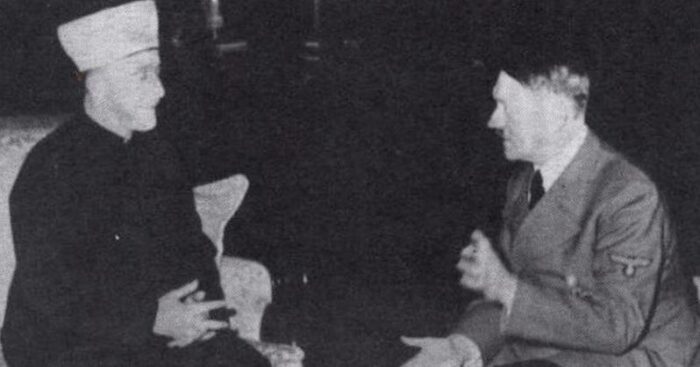
Izz ad-Din al-Qassam was not discouraged, but was murdered along with all his companions by British troops on October 14, 1935. The al-Qassam movement was unable to achieve any of its major goals, but it did pose a popular challenge to the leaders of the great feudal families and English colonialism.
Just the week after al-Qassam’s death, the feudal leaders (who had refused to attend his funeral) met with the British High Commissioner on the pretext of studying the demands of the Palestinian people.
Second period
Five months later, on April 15, 1936, al-Qassam’s clandestine cells united and took up the fight again. The revolution spreads from north to south. On April 19, the city of Jaffa was the center of a popular uprising: Britain completely destroyed several neighborhoods of the city.
This repression prompts the ‘national committees’ (formed by popular initiative) to declare a general strike. This will last six months: it is one of the longest in history.
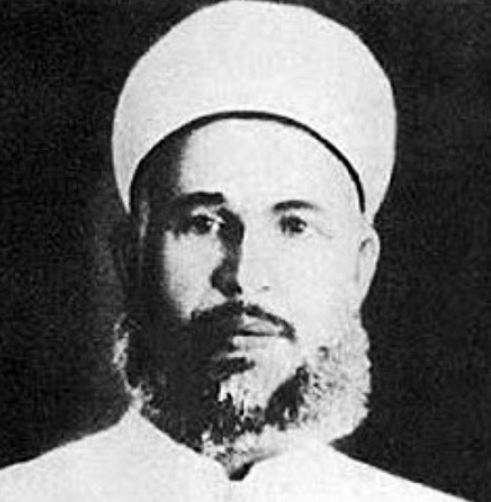
NB: The sheer duration of this strike shows the strength of the Palestinian movement and its motivations. But it also shows its weakness: the strike does not achieve its objectives.
The power of the independent Jewish market (see Chapter 3 – ‘Originality of Jewish Colonization’) is felt by suppressing the economic impact of the Arab strike. This power deprives the Arabs of all means of control over the economy. Moreover, the paralysis of the Arab market allows the strengthening of the Jewish economic sector (construction of the Tel Aviv port and strategic roads).
The existence and development of the Jewish market is both a cause and a consequence of the failure of the strike movement and the revolution of 36-39. (We can refer to the studies of Dr. Bauer from the University of Jerusalem and the articles of E. Lobel, Israeli economist).
On April 25, 1936, the above-mentioned ‘national committees’ demanded that the Islamic Council (headed by the Mufti of Jerusalem) and the five traditional parties (five because there were five rival families) disband and form the Supreme Arab Committee, to lead the struggle of the popular movement, a struggle that manifests itself in general strikes and armed revolution.
The Arab High Committee, dominated by the feudal and Palestinian bourgeoisie, wasted no time in spreading illusions about a possible change in the British government’s attitude.
The Arab feudal rulers of Transjordan, Saudi Arabia, Iraq and Yemen intervened in favor of reconciliation with the British. Despite popular opposition, the Arab High Committee hastened to issue a communiqué accepting the mediation of the Arab regimes and declaring an end to the strike and unrest by October 12, 1936.
NB: The feudal lords, who initially ‘supported’ the strike, violently opposed it when the harvest period approached and there was therefore a risk of loss of income.
A great example of well-understood nationalism!
Third Period
It begins with the assassination of the English Governor of the North, Andrews, on September 27, 1937. The Arab High Committee issues a statement denouncing the incident. British repression is brutal. It faces popular violence that also targets sellout politicians, land sellers to Zionists, and members of the police and military who support the occupation.
By early 1938, the revolution had matured and succeeded in taking root in vast areas. But the lack of a clear and radical political direction, English and Zionist military power, and the betrayal of the Arab bourgeois and feudal lords will ultimately ensure its failure.
N.B. From this period dates an English policy, which continued in Israel after 1948: the ‘collective responsibility’ of the inhabitants of a village, the obligation to house troops, the introduction of martial law, the custom of building houses (where Moshe Dayan, then lieutenant of the English adventurer Wingate, distinguished himself). According to sources, 20,000 to 30,000 British troops will be sent to Palestine. In 1938 the equivalent of 17 infantry battalions were present there. At the same time, the British, although not recognizing the Jewish armed militia (Haganah), hired 2,700 Jewish auxiliaries.

Key lessons of the revolution from 1936 to 1939
* The workers in the cities and the peasants in the countryside are the soul of this revolution and they have taken the initiative to initiate it.
* The reactionary feudal and bourgeois leaders have clearly always been against the revolution. If at first, they tried to take advantage of it, later they did not fail to turn against it, communicating to the English the plans of the revolutionaries and the places where they hid and gathered: by shock troops ‘peace brigades ‘ to shape. who pursue revolutionaries, commit crimes in villages favorable to the movement, and plan the assassination of Palestinian leaders.
* The absence of an effective and coherent revolutionary leadership is a major factor in the abortion of the movement.
* Another important factor in abortion is the failure of traditional weapons of struggle (strike), due to the existence of a developed Jewish economic sector.
MacDonald White Paper: The ‘Rewarded’ Rebellion In 1937–1938, England, alarmed by the severity of the situation, and with the rebellion almost crushed, responded to events with its traditional policy: the commission.
This proposes the division of Palestine into two states: one Jewish, the other Arab. This ‘solution’ is rejected by both communities (see appendix: The waltz of the committees).
In May 1939, with the publication of the White Paper, Britain abandoned the plan to divide Palestine. The uprisings of the Palestinian people and the international situation (the eve of the Second World War prevented the English from leaving too many troops in Palestine) forced the country to make certain ‘concessions’.
The White Paper calls for the independence of Palestine at the end of a ten-year period. However, English rule will only end ‘if the situation permits’, that is, in short, if the Zionists accept the Arab majority!
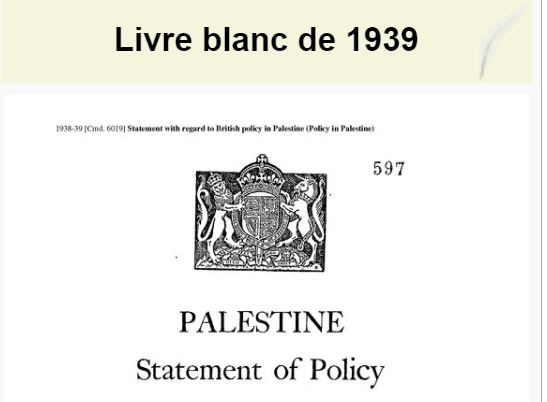
On the other hand, it limits Jewish immigration to 75,000 people for five years and limits the size of land transactions. The White Paper cannot satisfy either the Arabs or the Zionists: it will be rejected by both communities.
This ‘turn’ in English policy is not intended to bring rights and justice to the Arabs, nor to recognize the Palestinian people’s right to self-determination. Because during this period England worked sometimes secretly, sometimes openly, to prepare a Jewish Palestine, both in terms of population and economy. “We have agreed with Britain that it will give us a Jewish Palestine, as Britain is English.” (Weizman, Memories, Paris).
“If responsibility lies partly with the great colonialist powers, it lies essentially with Britain, a colonizing and mandated country since 1918. It is Britain that is responsible for the humanitarian crisis in Palestine, the common position of successive governments has been biased towards Zionism and cooperation with it.” (A. Toynbee, Director of the Royal Institute for International Research, Historical Studies, Part II).
Appendix: ‘The Waltz of the Committees’
A series of riots took place in Palestine in the early 1920s. These riots are the Palestinian counterpart of the insurgent movements in Egypt, Iraq and Syria. These movements strive for independence.
Faced with this series of riots, England will follow the well-known policy of ‘problem stacking’:
– Creation of a committee to calm the unrest;
– The reports of these committees are not taken into account;
– Strengthening the repressive power (army and police).
In April 1920, England established the Military Commission of Inquiry. His report shows that the causes of the Palestinian riots are:
– The Arabs’ disappointment during the non-implementation of the Hussein-Mac Mahon agreements;
– Their opposition to the Balfour Pledge;
– Their opposition to Jewish immigration and their demand for self-determination.
Faced with this direct accusation, Britain ignored the report and banned its publication in Palestine. In March 1921 another uprising broke out. England rushes to appoint a new commission. The report of this ‘Haycraft’ committee, presented to the House of Commons, summarizes the causes of the rebellion as follows:
– The GB’s refusal to the aspirations of the Palestinian people;
– Palestinian opposition to the permanent influx of Jewish immigrants;
– The Palestinians’ demand for the right to autonomy.
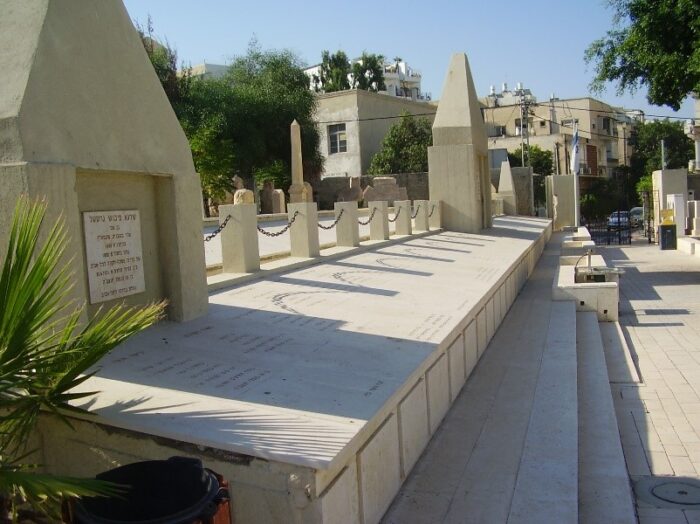
The fate of this report is identical to that of the previous ones.
In 1926, after the spread of the Arab Revolt, another commission, Shaw’s, noted that order would be definitively restored if:
– an end to the expropriation of Arabs (the Jewish economic sector is becoming increasingly important).
– puts an end to Jewish immigration.
– the Arabs are given autonomy.
England succeeds in suppressing successive riots and uprisings. During the bloody repression that ended the Palestinian revolution of 1936-1939, the British sent a ‘royal commission’, the Peel Commission, to the scene, which clearly noted the following:
“The underlying causes of the unrest are the same as in 1920, 1921, 1926, 1933.”
After taking stock of the situation, the committee concludes: “The promises that the English have made to the Arabs on the one hand and to the Zionists on the other are at the same time unrealizable.”
It proposes the division of Palestine into two states, one Arab and the other Jewish. Arabs and Jews both reject this proposal.
Why the Arab refusal?
¨¨¨¨¨¨¨¨¨¨¨¨¨¨¨¨¨¨¨¨¨¨¨
– The proposed solution leads to the partition of Palestine and the creation of a Jewish state: the Arabs want a united and independent Palestine.
– The share of communities in the proposed Jewish state is 50% Arab and 50% Jewish, while in this Jewish state the Arabs own 80% of the land.
– The report recommends ‘residential exchanges’.
He specifies that the number of Arabs in the Jewish state will be 325,000, while the number of Jews in the Arab state will be only 1,250. Such a population exchange, such a distribution project could only look like a gift from the English to the Zionists.
Why the Zionist refusal?
¨¨¨¨¨¨¨¨¨¨¨¨¨¨¨¨¨¨¨¨¨¨¨¨¨
At their congress in Switzerland, the Zionists rejected the project which they considered contrary to the Balfour Declaration, and the English promised to create a Jewish state in all of Palestine.
However, in November 1938, the Woodhead Commission, sent by Britain to Palestine, confirmed the impossibility of carrying out such a partition project.
THE SECOND WORLD WAR
The existing tensions between the Yishuv (Jewish community in Palestine) and the British due to the latter’s opposition to welcoming refugees (provision of the “White Paper”) calmed with the declaration of war and the threat of Germany in the Middle East.
N.B. Regarding refugees, in the years 1936-1940 we witnessed a strengthening of legislation in France, Belgium and the Netherlands. Refugees, Jews and anti-Nazi activists were turned back or imprisoned at the border. In June 1941, the United States banned entry into its territory of survivors of occupied Europe, whose immediate relatives lived in the US. In 1943, only 4,705 Jews were allowed to emigrate. From May 8, 1945 to October 21, 1946, only 4,767 “displaced persons” were allowed to emigrate to the US (Heruwitz, “The struggle for Palestine”, New York, 1950).
The cooperation between the Yishuv and the British will result in the permanent establishment and strengthening of the Jewish armed militia (Haganah and Irgun).

For example, in 1942, 43,000 Jews were under arms in Palestine.
The war will also change the economic face of Palestine. England is no longer able to tax its goods: it is of course the Jewish economic sector, equipped with a modern organization, with reserves of qualified labor that benefits from the expansion. The net military expenditure of the armed forces in Palestine during the period 1939-1944 is estimated at £113,000,000.
We are witnessing rapid development in industry and grain cultivation.
The economic boom complements the Yishuv’s national characteristics. It now has its industry, its agriculture, its militia, social and cultural institutions, its quasi-government (the result of its collaboration in government during the mandate).
British supervision becomes a yoke.
The political consequences of this state of affairs will not be long in coming. In May 1942, at New York’s Biltmore Hotel, American Zionists adopted a new political platform that would be ratified a few months later by the Select Committee of the General Council of the Zionist Organization in Jerusalem. This program calls for unrestricted Jewish immigration to Palestine, under the control of the Jewish Agency (Zionist political and financial organization), the establishment of a Jewish state throughout the country, and the creation of a Jewish army.
This program was adopted under Ben-Gurion’s leadership.
It includes almost all the positions of the far-right revisionists (split from the Zionist movement that demanded the military occupation of Palestine in the 1920s and proposed the government of the Arab majority by the Jewish minority).
THE PARTITION OF PALESTINE: UN intervention
On December 10, 1946, Atlee invited Palestinian Arabs and Jews to London for a conference to study the Palestinian problem. He presents Morrison’s project to divide Palestine into three zones:
– A Jewish area encompassing the entire coastal region, Galilee and the northern Negev.
– An area including Jerusalem and the holy places.
– An Arab zone that brings together the rest of the Palestinian countries.
The project also makes possible the continued Jewish immigration. It does not differ in any way from the previous ones.
The Arabs are against it:
– They refuse any division.
– They note that the number of Arabs in the targeted Jewish zone is greater than that of Jews in the Arab zone.
– They refuse Jewish immigration, which in fact poses a danger to them.
At the same congress the Arabs presented a counter-project:
– They propose the creation of a provisional government in which each community would be represented in proportion to the number of these subjects. Before the elections, this government should draw up a register of all Arabs and all Jews who settled in Palestine before 1946.
– They propose that all the inhabitants of Palestine thus named should subsequently participate in the election of a legislative assembly in which the relations of the communities are respected.
– They propose that the provisional government develop a draft constitution, which should take into account the following two requirements:
a) Make Palestine a united, democratic state, equipped with a constitution and a representative assembly elected by a first-degree vote.

b) Ensure respect for sacred places and freedom of worship.
– They propose to stop Jewish immigration until further notice of the government.
– They propose that after the constitution has been drawn up, we should hold general elections, appoint the head of the Palestinian state and declare Palestine’s independence. This project surprises English and Zionist politicians because for the first time the Arabs agree to take into account Jewish immigrants in Palestine and their contribution to self-determination. Arabs recognize the rights of Jews as citizens and as a religious and national group within the people and government of a united Palestine.
Despite this understanding on the part of the Arabs, Britain is against the project. The Zionists, for their part, demand the establishment of the Jewish state in accordance with the Balfour pledge.
England, at an impasse, resumes the role of “coercive and goodwill mediator.” “Britain failed in its attempt to mediate between the two sides. It failed to settle the Jews in Palestine without endangering the safety of the Arab inhabitants. The situation was made worse by the intervention of the United States, which used its influence to force thousands of Jews to flock to Palestine. It is unjust to grant newly arrived Jews the same rights as native Arab landowners. England cannot impose a final solution by force and is obliged to refer the matter to the United Nations.”
(Speech by Prime Minister Bevin in the House of Commons on February 27, 1947.)
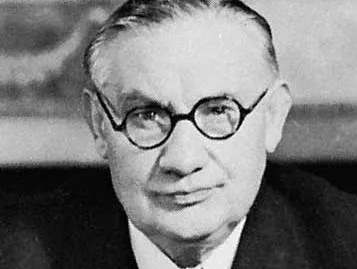
In early April 1947, England sent a note to the Secretary General of the United Nations, requesting that the Palestinian question be discussed at an extraordinary session.
England does not want to give up the mandate.
“We are not going to the United Nations to give up the mandate… We are seeking their advice on how to manage the mandate.”
(Colonial Secretary Creech-Jones, quoted by Hurewitz in “The Struggle for Palestine”, New York, 1950)
The extraordinary session requested by England took place on April 28, 1947. The meeting appointed an international commission of inquiry.
This committee is developing two sub-projects. It should be noted that the UN does not plan to consult the people of Palestine.
Majority project
– An Arab state with an area of 12,000 km² and 735,000 inhabitants, including 10,000 Jews.
– A Jewish state with an area of 14,200 km² and 905,000 inhabitants, including 507,000 Arabs who own two-thirds of the land.
– An international zone in Jerusalem with 205,000 inhabitants, including 100,000 Jews. The majority project is in fact intended to absorb almost the entire Jewish population that has already emigrated into the Jewish zone, at the expense of all other considerations.
Minority project
– An Arab state and a Jewish state in a confederation.
On September 27, 1947, the UN meeting took place to study the relationship between the two projects.
The US, which in fact controls the United Nations, approves of the idea of partition and does everything it can to ensure that the majority’s project is adopted.
The English delegate makes one last attempt to maintain the British mandate in Palestine; he announces a final and hasty evacuation of British troops, in the expectation that his country will be recalled to Palestine after the unrest that will inevitably break out there.
But England is no longer the master of the game: the Americans have taken the fate of the Middle East and that of Zionism into their own hands, just as they will later take the fate of Israel into their own hands.
N.B. The hasty withdrawal of the British army favors the Zionist militias over the weak forces of the corrupt Arab regimes. (see chapter “The War of 48”)
On November 29, 1947, the majority project was adopted with 33 votes in favor, 13 votes against and 10 abstentions. This majority was painfully obtained thanks to the shameless pressure on the delegations by the United States and the American Zionist lobby.
N.B. In April 1941, American Zionists founded the American Palestine Committee: a pressure group of approximately 700 people, including 6 senators and 143 representatives.
In fact, the approved project will not be implemented; it is the 1948 war that will determine the territorial division and impose Israel on Palestine and its people.
***********************************
Chapter 5 – The War of 1948
***********************************
The approval of the plan to divide Palestine brings to a head the series of incidents, attacks and killings that have taken place in Palestine since the end of the war.
Faced with the deterioration of relations between communities, faced with the inability to maintain order, faced with the obligation to implement policies contrary to its interests (loss of mandate), Britain takes an attitude of obstruction: it refuses to communicate the timetable for the withdrawal of the armed forces and the administration, the timetable for the transfer of power; it pursues a policy of abdicating the responsibilities entrusted to it by the United Nations. She hastily withdraws her troops, leaving the opponents face to face.
The day before the mandate expired, on May 14, 1948, David Ben-Gurion proclaimed the birth of the State of Israel in Tel Aviv. The next day, in accordance with the decisions of the Arab League, units of the regular Transjordanian, Syrian, Lebanese, Iraqi and Egyptian armies entered Palestine.
All Arab armies involved have about 25,000 soldiers, compared to a roughly equal number of Israeli soldiers, with much less extensive lines of communication. But in July there were 60,000 Jewish soldiers against 40,000 Arab soldiers (quoted by Swiss Zionist historian J. Kimche, in “Both Sides…”)
The Israelis
“60,000 soldiers, 15,000 modern weapons, namely 17 armored vehicles, 40 cannons, 500 machine guns, 96 mortars and 10,248 bombs.” (Report of the Anglo-American Commission of Inquiry.)
These Israeli forces will benefit in many places and on several occasions from the active sympathy of British soldiers, police and officials still in Palestine: thus, the assistance received during the forced evacuation of the Arab population in Haifa.
Furthermore, during the ceasefires that are part of the conflict, Jewish armed militias receive Czech weapons purchased with American Zionist dollars by Israeli communist leader Mikounis.
The Palestinians
There are no Palestinian armed forces (according to the Anglo-American Commission report). The emergency orders passed and implemented by Britain ensured that any Palestinian who owned a gun could face the death penalty.
What role will the Palestinians play in the conflict?
A role that has certainly been erased: an anti-Zionist rural guerrilla launched the day after the vote of November 29, 1947, a guerrilla was followed from January 1948 by the infiltrations of the army of Arab volunteers, led from Damascus by the Arab League.
These actions, which were in fact not very popular, did not last long: the Palestinian people were exhausted by the uprising of 36-39.
N.B. On this subject we can consult Hal Draper’s article in the magazine “Partisans” of April-May 1970.
The Zionist response has been swift and violent.
The political dissolution of the Palestinian civil and feudal leaders is enormous: for example, Kacukjii, adventurer and leader of the army of Arab volunteers, concluded a kind of ‘gentleman’s agreement’ with the Haganah (Jewish armed militia), in which he promised not to provide aid to his enemy Abdel Kader Hal Husseini (Abd al-Qadir al-Husayni – this will allow Zionist forces to control Jerusalem).

The Palestinian people will be definitively absent from the conflict following the April 9, 1948 massacre of 254 residents of the village of Deir Yassine by members of the Zionist armed groups Stern and Irgun.
The exploitation of this massacre by Israeli propaganda (see the study of A.M. Goinchon in “Esprit“, Paris, 1964, no. 7) will throw thousands of Palestinian Arab peasants onto the paths of exodus.
“After the massacre of Deir Yassine, great fear gripped the Arabs, who left the country in convoy after convoy.” (Weismann, “Memoires”)
“The legend of Deir Yassin especially helped us to save Tiberias and conquer Haifa (…) All the Jewish forces began to penetrate Haifa like a knife sinking into butter. The Arabs began to flee in panic and scream” Deir Yassin’. (Menachem Begin, “The Revolt of Israel,” Paris, 1953.)
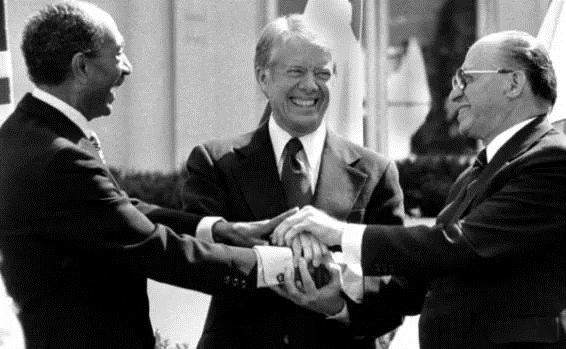
This massacre is the first of a long series.
“The specific practice of the Irgun consisted of looting Arab homes and shops, which was quickly “explained” and justified by the need to meet the needs of the Jewish evacuees (…). It could have been ended by stronger resistance from the beginning. But it soon became a practice for which there was always a material incentive, a fallacious justification, or an excuse.” (Jon Kimche, “Seven Fallen Pillars,” New York, 1953.)
Those massacres are explained by the desire to create a state for the Jews, without Arabs, in accordance with Zionist doctrine.
N.B. In this context, consult Hal Draper’s article in the magazine “Partisans” from April-May 1970.
The armies of the Arab states
The Arab armed forces are grouped in the Arab League, which is dominated by Britain. They are guided, trained and armed by the British: their commander-in-chief is the famous Glubb Pasha. These apparently powerful forces actually serve British policy in the Middle East.
Britain did not want a total expulsion of Jews from Palestine, but was willing if not encouraging […] to keep the Jews within a limited area along the coastal plain and Western Galilee” (Rony E. Gabbay, “A Political History of the Arab-Jewish Conflict”, Geneva 1959).

Britain wants its protégé, Abdellah of Jordan, to expand his power over the Palestinian state, creating an allied state in the region. “Thus, the future Arab state of Palestine was liquidated by an agreement between the outgoing Mandatory Power and the recently formed sovereign state of Transjordan.” (Benjamin Schwadran, “Jordan, a state of tension”, New York, 1959) The Arab armed forces are therefore completely dependent on Britain.
The British Prime Minister thus demands that King Abdullah of Jordan’s Arab Legion occupy only the region allocated to the Palestinian state, with the exception of the Jewish zone. “But do not invade the areas assigned to the Jews.” (Ernest Bevin, British Foreign Secretary Glubb Pasha.)
So once Arab forces pushed the Israelis back in June 1948, the British forced the Arabs to accept and extend a ceasefire. To do this, they withdrew British officers from the Arab Legion, stopped the payment of financial subsidies to Trans Jordan and imposed an embargo on the shipment of weapons and ammunition to Arab countries. The Arab Legion will quickly stop the fighting.
N.B. Situation of the Arab states in 1948.
- Syria became independent in 1946.
- Lebanon became independent in 1943. It was finally evacuated in 1946. The army consisted of 800 soldiers (!).
- The Principality of Transjordan was ‘almost’ a British protectorate.
- The Kingdom of Egypt is completely dependent on the British.
- Iraq is a kingdom. His army did not participate effectively in the war: it arrived late.
From mid-1948, Ben-Gurion and Abdallah agreed to divide the region that would become the Arab-Palestinian state. Trans Jordan thus expanded the name Hashemite Kingdom of Jordan and officially adopted it on April 26, 1949.
The Israelis; from armistice violation to armistice violation they expanded their territory. For example, on November 16, 1948, following a ‘request for protection’, certain Lebanese villages with a Shiite population (Muslim sect) were occupied by Israeli troops.
Soon, Israel’s territory will cover approximately 20,000 km², or 4/5 of the former Palestine. In early 1949, the Israelis signed armistices with the various Arab border countries.
The armistice between Egypt and Israel was signed on February 24, 1949. But shortly afterwards, on March 10, the Israeli army moved south into the Negev and occupied the Arab village of Oum Rash Rash, which would be renamed Eilat. By this action, Israel is imposing its presence on the Gulf of Aqaba.
N.B. The problem is a little more complex, because the region was then under the control of the Hashemite kingdom and not that of Egypt. The legal implications of this event, which nevertheless proves Egypt right, are presented in the book: “Colloquy of Arab Jurists”, Algiers, 1962.
Consequences of the 1948 war
– Israel has created a state of affairs on all its borders. He signed armistice treaties with the various Arab countries. They all specify that: “The demarcation line of the armistice shall not be interpreted in any way as a political or territorial boundary.” We will see later that Israel has not respected this specific and important part of the treaties.
– The war showed the extreme corruption of the reactionary Arab regimes and their dependence on the West. Defeat will hasten their fall (see next chapter).
– The birth of Israel has created the problem of Palestinian refugees, deprived of livelihoods, vegetating in the abject poverty of the UN camps. Israeli sources estimate the number of “departures” at 550,000.
A UN investigative committee announces the figure of 725,000. The U.N.R.W.A., the United Nations relief agency, reports that approximately 925,000 Palestinian refugees received aid in 1950.
*****************************************************
Chapter 6 – Post-war period and the Suez crisis
******************************************************
What does Israel want?
“All Israel asks of its neighbours is to accept it as it is…”
“It is the Arab states that refuse to come to terms with the current situation….”
Arab demands regarding the return to the 1947 borders and the acceptance of refugees are described as “unjustified” because their realization would mean the “destruction of Israel”.
(Pamphlet of the Ministry of Information, “Israel and the Arab States”, Jerusalem, 1959.)
It can be confirmed that Israel refuses any negotiations that would abandon the status quo obtained and maintained by force.
Israel is determined to confirm the finality of territorial division and impose it on neighbouring Arab states.
A constant in Israeli policy will be the transformation of the armistice agreements into a peace treaty recognizing the 1948 borders. This explains why that policy is so picky about everything regarding its “sovereignty”.
The number of incidents is increasing rapidly:
– Clashes between the Israeli army and farmers in the West Bank who want to cultivate and plow their land located in Israeli territory (the Israeli-Jordanian ceasefire border deprives more than 100 Arab villages of their land: the village is in Jordan; its lands are located in Israel).
– Clashes between the Israeli army and farmers in the Gaza Strip trying to reach their orange groves.
– Clashes between the Israeli army and Syrian farmers who have to cross Israeli territory to reach their land in the demilitarized zone (villages of Achmoura, Dardara, Tell, Katzir).
– Clashes between the Israeli army and Bedouin tribes in search of pasture for their livestock (in 1950, the 3,000 members of the Bedouin tribe Azzames were expelled from the demilitarized zone of El Auja, on the Israeli border with Egypt).
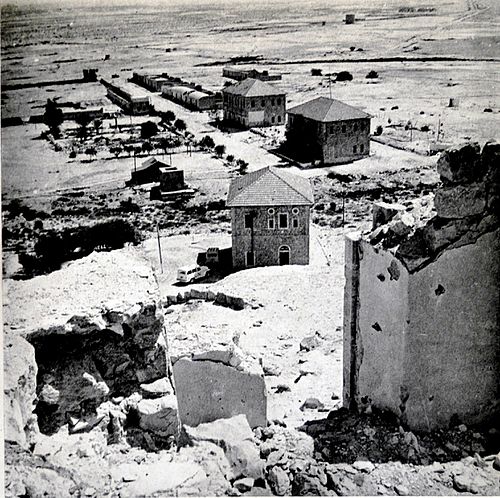
However, these initially minor incidents form the basis of the policy of reprisals or the policy of ‘active defence‘ of the Israeli army and the border police.
These incidents also form the basis of the policy of intensive settlement of military kibbutzim on the borders of the ceasefire agreement and the demilitarized zones.
During this period, from 1945 to 1956, American aid to Israel amounted to $596.2 million, or 71% of the amount received simultaneously by all Arab countries (Lebanon, Egypt, Jordan, Iraq, Saudi Arabia). (E. Gannage, “Economic Growth and Structures in the Middle East”, Paris, 1958)
This aid will of course have to be “paid for” – cf. appendix: “Israel and imperialism”.
The heaviest blows that Israel will inflict on its neighbours will be against the pro-Nasser regime of Nabulsi in Jordan, against the Nasser regime in Egypt, against the Baathist left wing regime in Syria; that is, against the regimes that tried to free themselves from the imperialist empire in the Middle East.
This explains why Israel will rightly be regarded by the national progressive Arab regimes as the ally of imperialism in the Middle East.
Rise of the anti-imperialist movement in the Middle East
On July 21, 1951, Abdullah, King of Jordan, was assassinated. He tried unsuccessfully to impose on his government, a non-aggression pact with the Jewish state.
For the same reasons, Lebanese Prime Minister Ryad Solh suffered an identical fate.
In 1951, Iranian oil concessions were nationalized.
In 1952, the Egyptian monarchical regime was overthrown by the Free Officers’ coup.
Nasser took power in March 1954. This rise of the anti-imperialist nationalist current in the Arab states cannot leave Israel indifferent. Questioning the 1948 status quo is unacceptable for Israel: it will intensify its “retaliatory operations”.
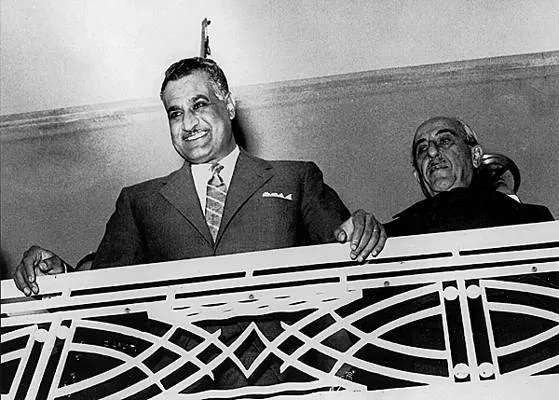
On February 28, 1955, the Israeli army, deliberately and without provocation, attacked a military camp in the Gaza Strip. This definitively put an end to the attempts at a peaceful settlement advocated by Nasser (see N. Weinstock, “Le Zionisme contre Israel”, Paris, 1969).
This bloody episode – the Egyptians counted about thirty wounded and forty dead, literally murdered in their beds – provoked a succession of retaliatory reprisals that led to Israel’s occupation of the demilitarized zone of El Auja in November 1955.
The Suez Crisis
The Suez Canal was owned by an international company where French-English interests predominated. Nasser had long been satisfied with this state of affairs and needed Western capital to develop the Nile.
In 1956, however, Foster Dulles, fearing Arab nationalism, influenced by the Israeli lobby and against the advice of American experts, refused to finance the construction of the Aswan Dam, an essential achievement for the Egyptian economy.

Wanting to show that he could survive without Western help, Nasser nationalized the Suez Canal on July 26, 1956. This nationalization pits the French-English imperialists against Nasser. They intervene and occupy Port Said.
Israel also intervened and occupied the Gaza Strip and Sinai. What interest did Israel have in supporting the intervention of the most retrograde colonialism?
Israel certainly sees this as an opportunity to humiliate the Nasser regime, whose example risks being followed in Afro-Asian countries; the possibility of imposing the 1948 status quo by signing a peace treaty – Israel and Egypt are currently only linked by armistice agreements.
The case is taken to the United Nations, where the tripartite intervention is condemned. The United States, fearing diplomatic problems with Arab countries, disapproves of the intervention.
The popular Egyptian and Palestinian resistance transformed the military defeat into a political victory.
Consequences of the Suez crisis
– The Nasser regime emerged stronger from the ordeal.
– One of the main objectives of the Israeli intervention was not achieved: Nasser did not sign the peace and did not recognize the status quo of 1948.
However, as Israeli forces evacuate the occupied territories, UN forces will station themselves on the Egyptian side, along the Gaza Strip border and on the western bank of the Strait of Tiran, protecting the Israeli border and ensuring free navigation through the Gulf from Aqaba becomes possible.
N.B. Israel has always refused the presence of UN troops on its territory.
********************************************************
Chapter 7: From the Suez War to the Six-Day War
Appendix: “Israel and Imperialism”
*********************************************************
The PLO
In 1964, the Arab states decided to establish the PLO at the Arab summit in Alexandria. (Palestinian Liberation Organization) and its armed wing, the PLA (Palestinian Liberation Army). They must respond to the turbulent political climate currently agitating the Palestinian masses.
The charter adopted at the end of this congress is more than moderate and, in a way, confirms the status quo of 1948. The head of the PLO is the cunning and inconsistent politician Ahmed Choukeiry (he was a Saudi Arabian delegate to the UN).
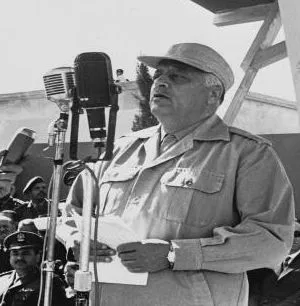
Despite attempts at grassroots radicalization, these organizations have been and remain enormous channels for the recovery and demobilization of young enthusiastic Palestinians who want action. Arab states fear and cannot tolerate the rebirth of a Palestinian entity; Especially Jordan, which emerged from the collapse of the Palestinian state (see “The 1948 War”).
El Fath
The PLO’s rival organization, El Fath, has existed in the Gaza region since 1956. After a long period of anticipation and difficulties, the first El Fath commandos did not appear until 1965.
This organization is supported by Syria, but violently suppressed by other Arab states.
“The government of Wasfi Tall (still head of the government in Jordan in 1971) did everything it could to neutralize the ingenious elements as much as possible.”
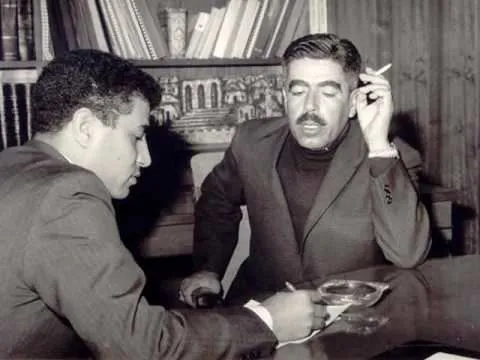
“Israel’s policy is to protect and maintain the status quo in the Middle East (…) but if the situation in Jordan were to change, Israel would reserve the right to act”.
(L. Eskhol, “Le Monde”, December 24, 1966)
This explains the bloody Israeli reprisals against Palestinian commandos and refugee camps. Through these actions, Israel offers Amman the opportunity to suppress Palestinian movements under the guise of avoiding provocations.
Following an operation carried out by El Fath, which claimed the lives of three Israeli soldiers near the Jordanian border, the Israeli forces launched an attack on several villages in the Hebron region on November 13, 1966. Both large armoured forces and the air force are actively participating in this operation. In Samoa – Es Samu – 125 houses, the pharmacy, the school and a workshop were blown up and destroyed.
(General Odd Bull, head of the UN Truce Monitoring Organization, “Le Monde”, November 22, 1966).
The economic crisis in Israel
In the 1960s, an economic crisis unprecedented in the history of the young state developed in Israel. The economic crisis is exacerbated by the cessation of German “reparations” (which total DM 3.5 billion), and by the significant reduction in the income of Zionist organizations abroad.
Now that external threats have become less urgent, workers are discovering the wage struggle: the number of ‘wild’ strikes is increasing sharply, strikes in the tertiary sector and public services are frequent.
Declining support for global Zionism and the importance of emigration, which for the first time exceeds immigration due to unemployment, cast doubt on the nature of the Zionist state. The seriousness of the situation must have prompted some to consider the idea of an external distraction.
The situation in Syria
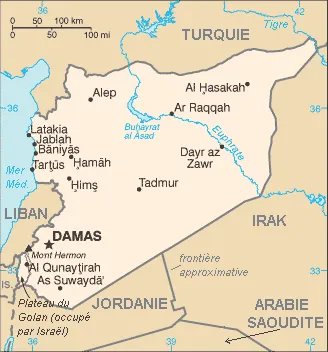
On February 23, 1966, the left of the Baath Party finally took power in Syria. The regime pursued a policy of radical nationalization and agrarian reforms (the military in power was of peasant origin), and victoriously fought against the Iraq Petroleum Company and obtained from it a beneficial revision of its royalty policy. Finally, it pursued a resolutely anti-imperialist foreign policy.
Despite its weaknesses – power cut off from the masses – the Syrian regime is undoubtedly at the forefront of the Arab world.
Damascus is moving closer to Cairo, the only Arab capital that is also confronting Western imperialism.
Faced with this revolutionary rise, Israel cannot remain indifferent and will miraculously play its role as a progressive bastion of imperialism in the Middle East. “The battle that Israel must wage against Syria, in retaliation for the sabotage attacks the country is suffering, is therefore aimed at the Syrian regime.” (General Rabin, “Le Monde”, September 23, 1966)
“We will fight back when, where and how we want”.
(L. Eskhol, “Israel Digest,” vol. 10.)
“Until the fiery revolutionaries of Damascus are overthrown, no government can feel safe in the Middle East”.
(General Rabin, “Le Monde”, May 13, 1967.)
We are clearly attacking revolutionaries who are endangering the security of the region. These are words that the US State Department would not have denied.
N.B. Israel will accuse the Syrian regime of being responsible for the war for ‘national liberation’ led by Palestinian commandos. According to an Israeli Foreign Ministry brochure (“The Arab War Against Israel”, Jerusalem, 1967), there was one Israeli death during 46 commando operations from January 1 to June 5, 1967, including 13 launched from Syrian territory. Raising the threat of an eradication attempt carried out with Syria’s support has a name in political terms: bluff.
The Israeli aggression of June 5, 1967
The Egyptian government believes in the Israelis’ threats against the Syrian regime. Indeed, Nasser had an interest in defending his only ally in the region.
N.B. In 1965, Washington refused to renew the three-year wheat supply agreement to Egypt except under more onerous circumstances.
In 1966, Washington ended its aid to Egypt. The seven-year plan is collapsing: there is a shortage of foreign currency, the cost of living is rising, popular discontent is growing. Washington claims it will resume wheat deliveries if Egypt cuts aid to Yemeni republicans fighting feudalism backed by the reactionary regime of King Faisal of Arabia. Nasser refuses.
The survival of the Egyptian regime is a subject of speculation in Washington.
On May 14, 1967, Nasser carried out troop manoeuvres in Sinai.
(General Rabin, “Le Monde”, May 16, 1967.)
The Times’ Israeli correspondent cabled on May 19 that Tel Aviv was aware of its military superiority and the defensive nature of the manoeuvres in Cairo.
(The Times, May 20, 1967).
On May 22, Nasser ordered the closure of the Gulf of Akaba to Israeli ships and ships carrying strategic goods to Israel.
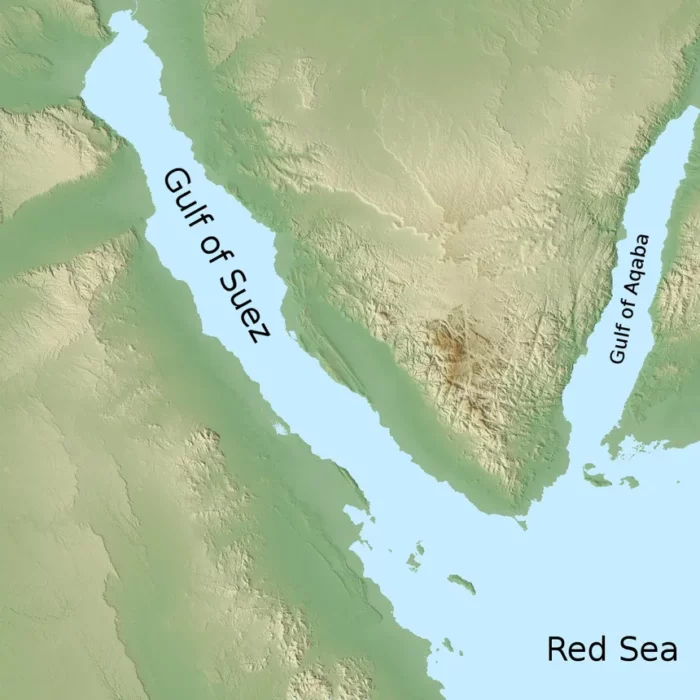
On June 5, Israel attacks.
“(…) if we show our teeth, we become important again, untouchable. The others keep quiet for a year, ten years, six months. And so forth Israeli policy is summed up in an impossible attempt to ‘freeze’ the existing balance of forces forever“.
(Anna Zemer, leading figure of Mapaïm, Israeli social democratic party, quoted by N. Weinstock, “Le Zionisme contre Israel”, Paris, 1969.)
“As so often in the past, Nasser allowed himself to be drawn into a war he did not want”. (General Rabin to Hiller, English historian, June 12, 1967.)
Conclusions on the 1967 war
– The defeat of 1967 showed the inability of the petty-bourgeois Arab regimes to victoriously combat Zionism and imperialism, just as the 1948 war had shown the inability of the bourgeois and feudal Arab regimes.
– The Palestinian people will draw conclusions: the resistance is growing and the support of the Arab and Palestinian masses is becoming more and more concrete. The resistance is becoming increasingly radical (foundation of the Marxist-Leninist movement, the F.P.D.L.P., February 10, 1969).
– The Arab regimes recognize their inability and endorse peaceful solutions that are completely contrary to the revolutionary project of the resistance. This explains the attempts of petty bourgeois Arab regimes (Egypt, Syria, Iraq) to co-opt the resistance and include it in the diplomatic game. This explains the attempts of the reactionary Arab regimes (Jordan) to liquidate the resistance purely and simply (see “La crise de septembre 1970”, F.P.D.L.P. brochure, Liège, 1971).
– The Arab defeat of 1967 enabled the rapid development of annexationist forces in Israel.
Appendix: Israel and Imperialism
“In dollars and cents, American aid – both government and private sector – to Israel over the years has been prodigious. Between 1948 and 1968, U.S. government economic aid amounted to $11 billion, while private capital transfers reached $25 billion, yielding a total of $36 billion, or $1,400 per individual, for an average population of 2,500,000. This per capita aid far exceeds the aid provided by the United States to its other allies, and does not compare to the $35 per capita provided to thirteen neighbouring states. Since 1968, American aid to Israel has increased significantly. In 1970, dollar transfers amounted to 800 million, and in 1971 they approached one and a half billion”.
(D. Nes, member of the American Foreign Service, “Le Monde”, March 17, 1971.)
How did Israel pay for this aid?
In 1951, Israel supported the United States in the Korean War. This support puts an end to Israel’s official policy of non-alignment.
However, Korea is thousands of kilometres away from Israel. In the 1950s, the Israeli government joined France on the Algerian issue (at least, until the Evian Accords).
“In their eyes, the case of Algeria is in many respects similar to that of Palestine, that is a racial conflict, and it is appropriate to apply similar methods there. The creation, in Algeria, of a state in the image of Israel would therefore essentially amount to granting racial unity to Israel. Ben Gurion therefore recommended reserving this state for Europeans and excluding Muslims, who would occupy the entire rest of Algeria”. (B. Gourion to De Gaulle in A. Peyrefitte, “Faut-il partager l’Algérie?”, Paris, 1962.)
Algeria is not a country in the Middle East and strategy plays no role here.
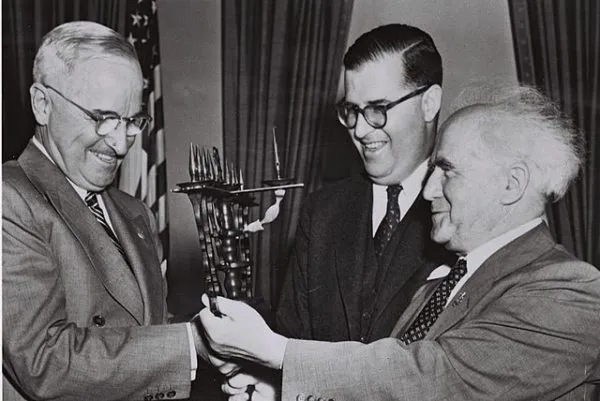
However, Algeria is developing a liberal policy of openness to Algeria’s Jewish community. In 1956, after the military intervention in Suez, Mr Abba Eban denounced – before the General Assembly – Nasserist subversion in Asia and Africa. He speaks of the “humiliation” inflicted on maritime powers by the nationalization of the Suez Canal.
(Middle East Affairs, December 1956).
In 1961, Portuguese troops in Angola were supplied with Israeli weapons by West Germany.
(“The Observer”, May 28, 1961)
In 1962, the Israeli General Staff was responsible for teaching new mountain combat techniques to Indian forces fighting the People’s Republic of China.
(J. Wetz, “Le Monde”, April 6, 1962).
In 1967, the newspaper “L’Orient” reported the presence of a handful of Israeli civilian experts from South Vietnam as part of a technical assistance committee.
(“L’Orient”, February 24, 1967.)
Finally, let us not forget that the Israelis trained the paratroopers and ‘special forces’ of the Kingdom of Ethiopia, “Concerned, like the Ethiopians themselves, about maintaining the status quo in the eastern Horn of Africa, as well as about freedom of navigation in the Red Sea”.
(P. Decraene, “Le Monde”, September 5, 1967.)
– that they trained soldiers and police officers from Congo-Kinshasa (under Tchombé), Sierra Leone, Uganda, Ghana, the Malagasy Republic and Tanzania.
(P. Decraene, “Le Monde”, September 5, 1967, and J. Kenon, “Israel Economist”, June-July 1966.)

– that despite ‘diplomatic’ reservations towards the South African regime, they maintain very good economic relations with the regime. (“Israel Economist”, February 1968 and “Le Monde”, June 16, 1967).
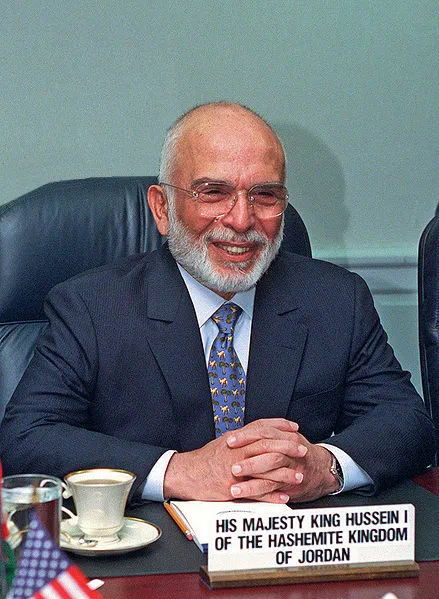
“We protected him for ten years. Without Israel, Hussein would probably have fallen long ago. Everyone knew that if there had been a revolution in Jordan, Israel would have immediately occupied the West Bank.” (Colonel Ghavit, deputy to Mr Dayan, “Le Nouvel Observateur”, March 27, 1968).
“(…) Syria warns against the disadvantages of too much involvement alongside Palestinian organizations in their armed struggle on Jordanian territory.”
(Y. Allon, Vice President of the Council of Israel, “Le Monde”)
As for the small contradictions that arise between the United States and Israel, and which can mask the relationships of dependence on each other, let us not forget that:
“A few weeks ago, the House of Representatives passed an amendment to the National Defense Budget Act, which gives the president, without time limit, the authority to transfer military equipment to Israel without a financial cap”.
“Since the 1940s that I have been a member of this House,” declared House Speaker John McCormack, “I have never seen anything like it. At the height of its struggle against Hitler, Britain never benefited from such a blank check. Nor, more recently, South Vietnam. By a vote of 60 to 20, the Senate on December 15 repealed the Williams Amendment to the Appropriations Act, which would have prevented the president from sending U.S. troops to Israel without congressional approval.”
(D. Nes, “Le Monde”, March 17, 1971.)
Israel is the advanced stronghold of imperialism in the Middle East.
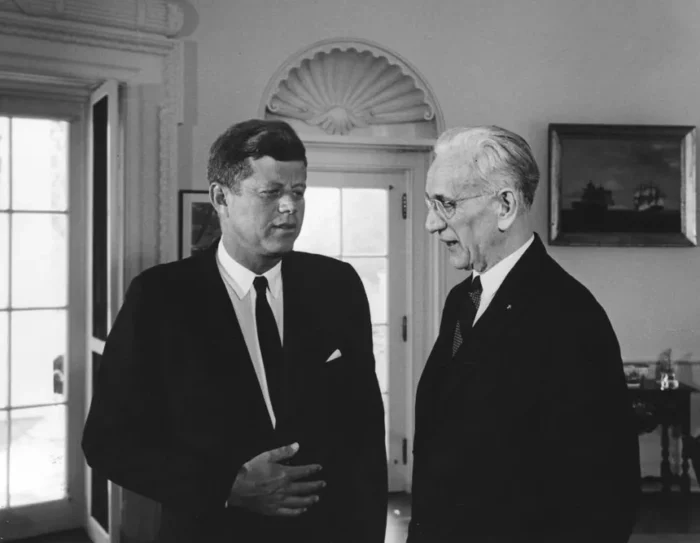
******************************
Chapter 8 – Quick timeline
******************************
1880-1890 First mass Jewish immigration to Palestine
1897 First Zionist Congress in Basel: Palestine is designated as a future Jewish state.
1903-1914 Second mass immigration of Jews to Palestine. The new immigrants impose the slogans “Jewish work and Jewish product” on the already established colonists. This is the real beginning of the settlement colonization.
1916 The English promise independence to the Arabs.
1917 The Balfour Declaration: The British government favors the establishment of a “National Home for the Jews” in Palestine.
1917-1918 Occupation of Palestine by the English
1920 Start of the British Mandate in Palestine.
1920-1936 Riots and uprisings by Palestinians against Jewish immigration.
1936-1939 Palestinian revolution against English colonialism and its ally in the region: Zionism. England suppresses the revolutionary movement with violence.
1939 The White Paper
1940-1945 Strengthening of the Jewish community in Palestine. British supervision becomes a yoke.
1947 Plan for the partition of Palestine, approved by the UN.
1948 Deir Yassine massacre: the exodus of the Palestinian people becomes important. Proclamation of the State of Israel. Arab-Israeli war. Agreement between Abdallah of Trans Jordan and B. Gurion for the division of the Palestinian state.
1949 Armistice Agreements between Israel and Arab border states.
1952-1956 Rise of the anti-imperialist movement in the Arab states.
1956 Nasser nationalizes the Suez Canal. Tripartite aggression (France, England and Israel) against Egypt.
1964 Establishment by the Arab states of the O.P.L.
1965 The first commando operation of El Fath.
1958-1967 Second wave of anti-imperialism in Arab countries.
1967 Israeli threats against Syria. Israeli aggression. Israel occupies the Gaza Strip, the Sinai, the Golan Heights, the West Bank and Jerusalem.
1967-1970 The Palestinian resistance radicalizes.
1970 Attempts to liquidate resistance from reactionary Arab regimes (Jordan).
****************************
Chapter 9 – Bibliography
****************************

K. MARX “The Jewish Question”, Moscow
O. LENIN “The Question of Nationalities and Autonomy”, Moscow 1959.
A. LEON “Materialist Conception of the Jewish Question”, E.D.I., 1968.
M. RODINSON Foreword to the book by A. LEON.
These works present Marxist analyzes and positions on the Jewish problem.
N. WEINSTOCK “Zionism against Israel”, Maspero, Paris, 1969.
Historical, political and economic research. It is a basic work, well documented and clear.
S. GERIES “The Arabs in Israel”, Maspero, Paris, 1969.
Methodical, clear and documented work on a little-known problem: the situation of Arabs and minorities in Israel.
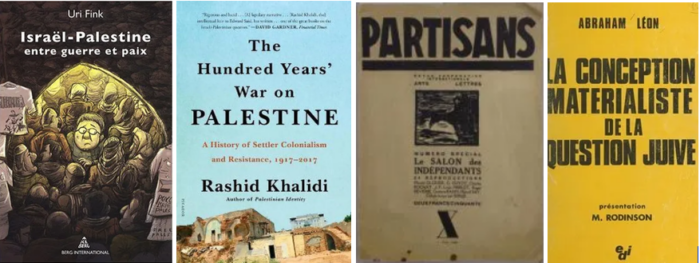
E. LOBEL “The Jews in Palestine”, preface to the previous one.
Excellent study of the Zionist phenomenon.
M. RODINSON “Israel, colonial fact?” in “Les Temps Modernes” no. 253 bis, Paris, 1967.
L. GASPAR “History of Palestine”, PCM, Paris, 1968.
“Palestine, Year Zero”, Maspero, Paris, 1970.
These are two simplified popular works.
FRANCOS A. “The Palestinians”, Julliart, Paris, 1968.
M. HILLEL “Israel in Danger of Peace”, Fayard, Paris, 1969.
These are two current works (1971). They provide interesting information; the second in particular on Israel’s internal problems (religious fanaticism, latent racism, immigration, etc.)
PARTISANS Revue, Paris, no. April-May 1970.
In particular, it contains an interesting article by H. Draper on the problem of Arab refugees in 1948, a study based solely on Zionist sources. It contains the analysis of the Israeli-Arab conflict by M.S. Odeh, member of the F.P.D.L.P.
F.P.D.L.P. “The fifth attempt to encircle and liquidate the Palestinian resistance” Liège, 1971.
Political analysis of the September 1970 crisis in Jordan.
You can also consult the articles of Saab, Rouleau, Fontaine, Lacouture, etc. in “Le Monde” and “Le Monde Diplomatique”.
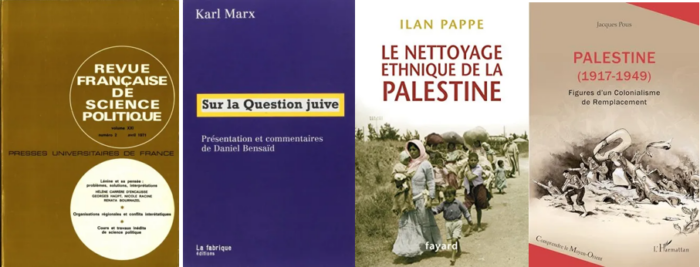
!!!!!!!!!!!!!!!!!!!!!!!!!!!!!!!
So much for the history of the Palestinian “problem”.
The purpose of a history is to create a sequence of facts, without opinion or belief. That is not always the case, not even here. That is why the website is open to comments. If you have something to add, improve, supplement, … send an email with your findings. Additions and/or improvements must be supported with arguments, documentation, references, etc.
Let’s hear it.
See also: https://rokfin.com/post/155352/UK-Prime-Ministers-Family-To-Rake-In-BILLIONS-From-Gaza-Oil + https://rokfin.com/post/155348/Israeli-Land-Grab-Is-Over-Gazas-453-Billion-In-Natural-Gas
